Rachael Dickzen's Blog, page 12
December 7, 2019
Overanalyzing The Crown: S3E8 "Dangling Man"
This post is part of a series on Season 3 of The Crown. All my posts are available here .
The Duke of Windsor, the former king whose abdication had put both Queen Elizabeth and her father on the throne, develops terminal cancer. The Queen, who’s visiting France to assist with the UK joining the EU, visits him and provides him some peace before his death. Prince Charles falls in love with Camilla Shand, while Princess Anne hooks up with Camilla’s ex/possibly not ex Andrew Parker Bowles.
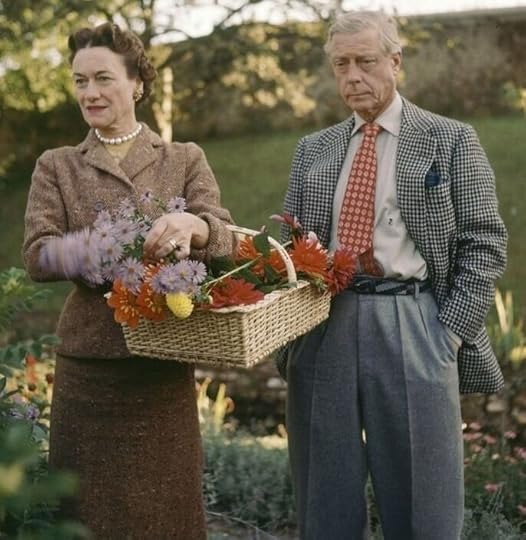
The real life Duke and Duchess of Windsor in 1955. Photo: Frank Scherschel/The LIFE Picture Collection/Getty Images.
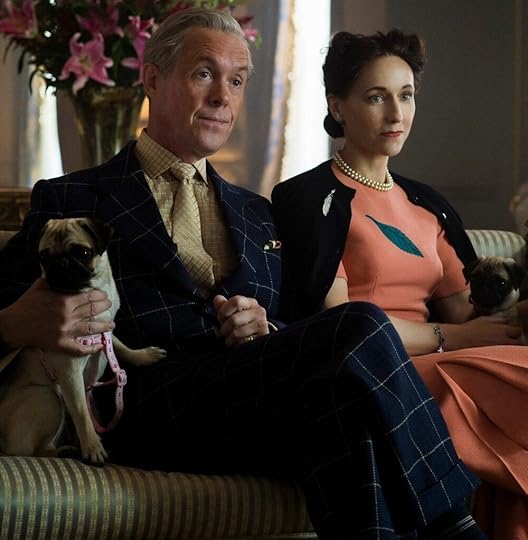
Alex Jennings as The Duke and Lia Williams as the Duchess were featured in Season 1 and 2 of The Crown. (This scene was set during 1953)
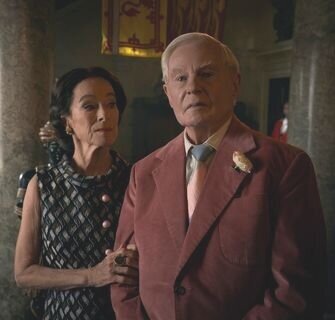
Geraldine Chaplin and Derek Jacobi as the Duke and Duchess of Windsor in Season 3. This scene was meant to take place around 1972.
The Duke of Windsor is such a controversial character historically. Modern eyes often want to look favorably upon his abdication to marry the woman he loved, but at the same time, he and Wallis Simpson undoubtedly supported Hitler and the Nazis (as shown in S2E6 Vergangenheit, which means “past,” by the way) and engaged in treasonous acts against England. They also clearly were somewhat petty and mean toward the royal family, although it’s hard not to understand their viewpoint. Apparently, Edward/David was under the impression that he would be allowed to live in England again a few years after he abdicated; he didn’t take well to being told that he could only enter the country again at the invitation of the sovereign. They were essentially in exile the rest of their lives, although Queen Elizabeth was far kinder to him then really anyone else in the family. This is shown in The Crown when both Philip and the Queen Mother are much harsher in their judgments toward the Duke and the Duchess than Elizabeth ever is, at least aloud.
His actions did have a very significant result on Elizabeth’s life in forcing her to become queen, and as she stated in S3E5 “Coup,” it’s not something she would have chosen. His abdication has already been seen to have a huge impact on how the Queen and the government dealt with Margaret’s relationship with Peter Townsend. It will later also impact Margaret’s divorce from Antony Armstrong-Jones, and the relationships and divorces of several of the Queen’s children. It also led to the Queen having firmly held views against abdicating under any circumstance. A very recent article quoting a spokesman from Prince Charles’s office noted, “There are no plans for any change in arrangements at the age of 95 — or any other age.”
I do have to say, Alex Jennings, the actor who played the Duke of Windsor in the first two seasons looks SO much more like him than Derek Jacobi does, as brilliant as he is.
The Duke and Duchess’s meeting with Emperor Hirohito and his wife, Empress Kojun, really did happen. The photos from that event show off how close The Crown can get to reality if they so choose.
The moment where doorman Sidney (who really existed) applies rouge/blush to the Duke’s face to make him less ill is very similar to the blush that was applied to George VI’s face in S1E1. And just as the Duke jokes that “we don't want it to look like kabuki,” the King’s assistant then said that they didn’t want to overdo it.
Emperor Hirohito grumpily says, “They promised no cameras. I don’t want people to see me to visit a man who couldn't hold on to his throne.” I also love the contrasting comments at the end of their meeting: Emperor: "imagine living in exile from his homeland. I would rather die.” Duchess: “He never leaves japan. Imagine being stuck on an island your whole life.” Duke: “An island which is home and where you reign as sovereign. I can think of worse things." There’s that same nostalgia we saw in S1E5 “Smoke and Mirrors” (when he plays the bagpipes and cries after Elizabeth’s coronation) and in S2E6 Vergangenheit, when he looks for a way to be useful to England.
The Duke of Windsor did indeed keep his red leather dispatch box marked “The King” in his foyer in real life.
My husband (who speaks Japanese, works in a primarily Japanese law firm, and knows just a ton about Japanese culture) tells me that I shouldn’t actually call the Emperor Emperor Hirohito, as the emperor gets a new name after death! This is from Wikipedia: “In Japan, reigning emperors are known simply as "the Emperor" and [Hirohito] is now referred to primarily by his , Shōwa (昭和), which is the name of the era coinciding with his reign; for this reason, he is also known as the Shōwa Emperor or Emperor Shōwa.”
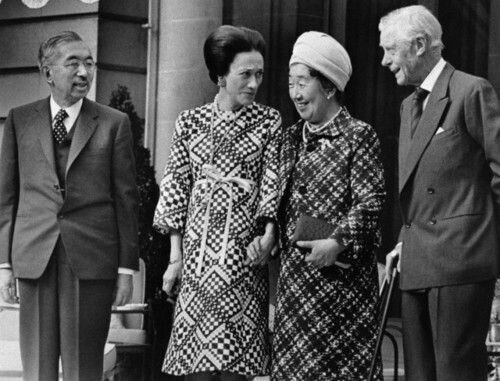
The actual meeting between the Duke and Duchess of Windsor and the Emperor and Empress of Japan took place in October 1971.
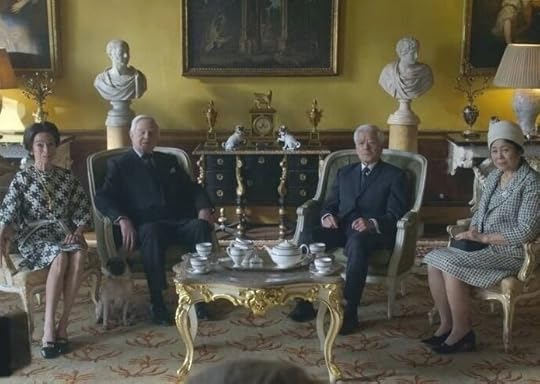
The meeting between the Duke and Duchess and the Emperor and the Empress in The Crown.
In real life, Prince Charles did correspond with his great-uncle, the Duke of Windsor. His other great-uncle, Lord Mountbatten (Uncle “Dickie”) encouraged this; he was both the Duke’s friend and keenly aware of the damage he caused with his abdication. Mountbatten was actually in charge of the Duke’s estate after his death and arranged for numerous items to be returned to the Royal Archives.
Charles did visit the Duke and Duchess once in October 1970, but apparently they had a party going on at the time. Charles didn’t stay too long and didn’t seem too impressed by it all. After both the Duke and Duchess died, a businessman named Mohamed Al-Fayed purchased their home and estate; he took Charles on a tour of it in 1986 and said he could choose anything he wanted from the estate, but Charles wasn’t interested in any of their family albums or souvenirs. So it seems that perhaps Charles didn’t view the Duke as a mentor after all.
I loved Olivia Colman’s line about this meeting in the crown: “One doesn't usually get the opportunity to meet a former king. Former kings are usually dead.” Also, in the show, Charles tells Mountbatten that the entire house smelled “Like joss sticks and dogs.” I had to look up what joss sticks are, but it refers to incense.
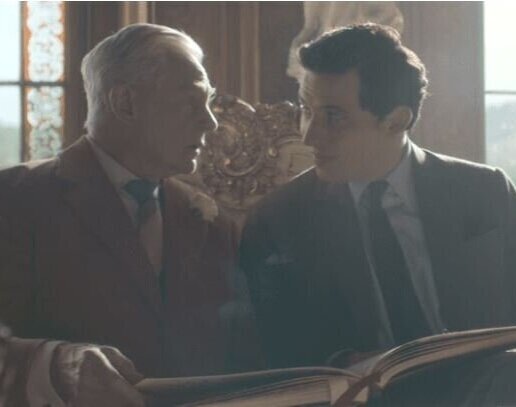
The Duke of Windsor and Prince Charles in The Crown.
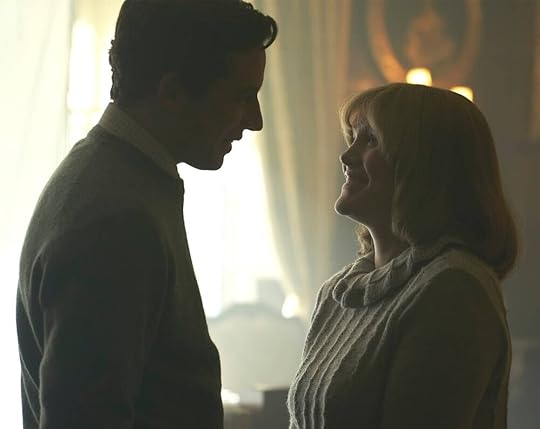
Charles and Camilla in The Crown.
If Andrew Buchan, the actor playing Andrew Parker Bowles looks as familiar to you as he did to me, you may have seen him before in his role as Mark Latimer in Broadchurch. Princess Anne and Parker Bowles did indeed date in real life, but apparently only for a short time. They have remained good friends and have been photographed together many times over the years.
"Where's mehmsahib?" a friend asks Captain Parker Bowles, referring to Camilla. In case you were wondering, this is a leftover Indian colonialism term that means “a married white or upper-class woman (often used as a respectful form of address by nonwhites).”
Apparently Charles’ real life first conversation with Camilla was rather hilarious. She joked “My great-grandmother was the mistress of your great-great-grandfather. I feel we have something in common.” I so wish they had actually shown that in The Crown; as it is, we don’t really see their first meeting, but just a bit of them checking each other out before Charles calls up Camilla to ask her out.
At the time, Camilla was in a years-long on-again, off-again relationship with Andrew Parker Bowles. The couple only got engaged after their two fathers conspired together and published an engagement notice in The Times, which forced Andrew to finally act.
Charles' inaccurate description of Camilla and Andrew’s relationship to Dickie (that she and Andrew fell out over ANNE, when we saw in the show that they had quite obviously fallen out before that) illustrates all the rumors and misconceptions around everyone involved. It’s also interesting that Charles’ description of his visit with the Duke of Windsor to Mountbatten doesn’t seem to quite align with the video we see of it later in the episode, while the Queen is reading Charles’ letter to the duke. This “audio says one thing, video says another” trick is a classic unreliable narrator film style which was also used when the Duke was writing to Wallis in both Season 1 and Season 2; his words often exaggerated the number of supporters meeting him, etc.
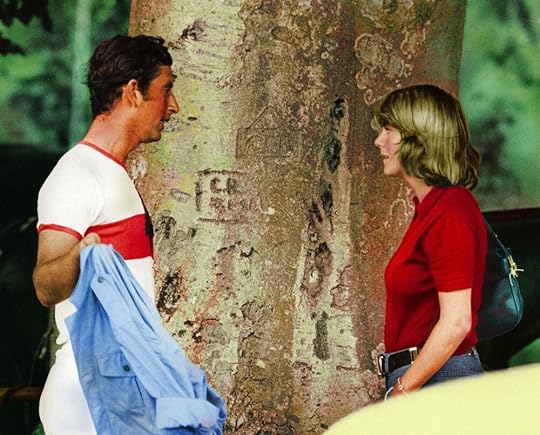
The real life Charles and Camilla
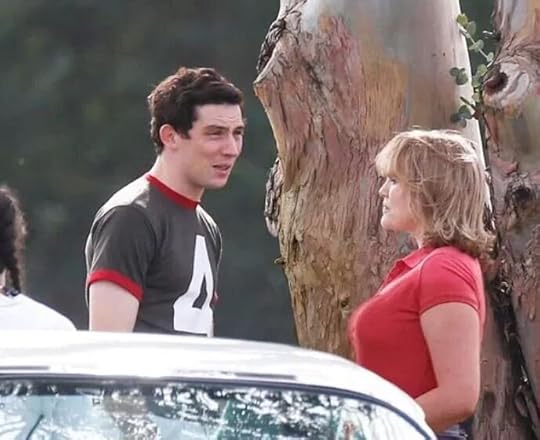
This scene was recreated in The Crown, but I don’t remember seeing it in the final cut.
When Edward Heath disses Harold Wilson, by saying Wilson had expected the most recent election to be his coronation, the queen responds frostily, “nothing wrong with a coronation under the right circumstances,” indicating her subtle support of Harold Wilson. Wilson would end up being one of the Queen’s favorite prime ministers; he’s the only one other than Winston Churchill who hosted her and Prince Philip at a dinner at Downing Street.
Heath is so awkward. When he’s with the Queen, he sits on the front of his chair the entire time, like he’s terrified to lean back.
The Queen is wearing blue when she tells Philip she’ll be going to France to charm Georges Jean Raymond Pompidou, who was prime minister of France from 1962-1968 and then president from 1969-1974. The French flag, naturally, is blue, white, and red.
Prince Philip reminds me so much of my husband, who also meets people several times and then somehow doesn’t remember them.
"I never see the other one anymore…where's the other one… the bald one?" “He retired. Three months ago. You gave him a clock!”
Philip-ism, on the Duke of Windsor and his visit from the Emperor and Empress of Japan: "He didn't cause them offense. He didn't abdicate the Japanese throne or kill the emperor's father. For the last time, no. That man, his shame - like the stench of livestock - it seeps into the woodwork and never goes away." What is philip doing during all of this - polishing a gun? That’s what it looks like.
As Charles is getting everything ready for his date with Camilla, The Four Seasons’ “Beggin” plays in the background, with the curiously applicable lyrics:
”Ridin' high when I was king,
Played it hard and fast cause I had everything
Walked away, wonderin' then
But easy come and easy go and it would end”
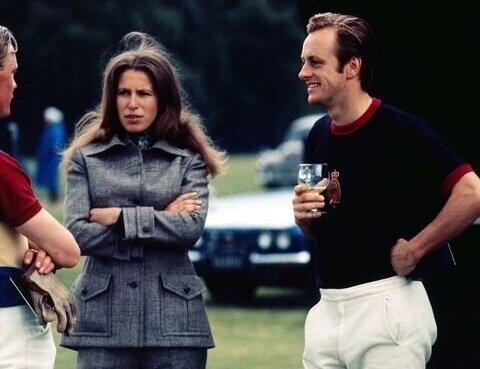
Princess Anne and Andrew Parker Bowles in real life.
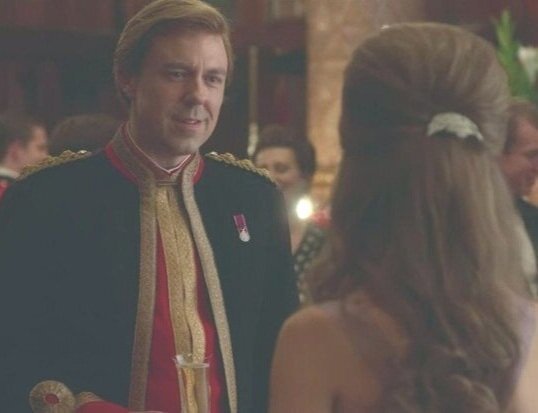
Andrew Parker Bowles and Anne in The Crown.
Camilla walks into Buckingham and just looks around shocked for a little bit, very in awe of the whole place, and then has to run to catch up to the footman. Charles looks pretty unhappy when Camilla keeps going on about him being prince during their date.
Charles says something very profound about his life right before he plays a prank on Camilla; he plays it off as a joke, but I’m not so sure: “I live not so much an existence but a predicament. I am both free and imprisoned. Utterly superfluous and quite indispensable. One can never fully invest in one thing or another, because at any moment, it could all change.”
“How can one be a good son even though [her dying] is the thing you most dread, it’s the thing you most, not desire, well yes, desire , because until she dies, I cannot be fully alive. Nor can I be the thing for which I have been born, so one is condemned to this frightful business of waiting.”
Charles refers to “Dangling Man” by Saul Bellow and describes it as being about “existing in a timeless and slightly ridiculous abyss. … an unemployed man from Chicago waiting to be drafted to go to a war. And he actually wants to be drafted because it will give his life meaning.”
Camilla wears a string of pearls on their date (with a really cute peach ruffled shirt, mini skirt, and black jacket). Most of her outfit doesn’t seem to have any deeper meaning, but the Queen wears a pearl necklace so often that I imagine it has to be an intentional callback to Charles’ mother, who is such a big part of their conversation.

Real life Prince Charles
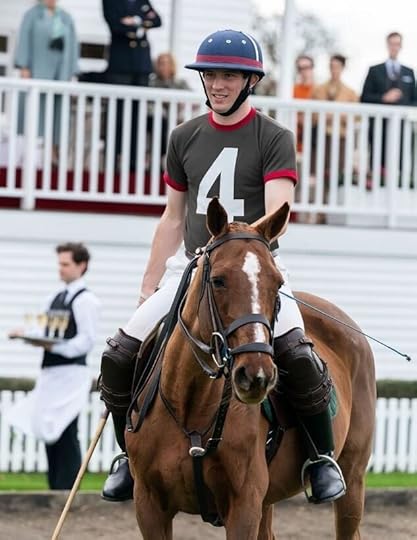
Prince Charles playing polo in The Crown
During the Duke’s interview with the BBC, his grey suit appears to be too large for him. The Duke of Windsor was known for being quite a natty dresser, so I imagine this oversized suit is meant to indicate his weight loss from cancer. The Duchess is wearing a scarf that makes her look incredibly French.
The Crown is really good at showing the reach of media, how so many people are watching it. As the Duke talks about how he had wanted to change the role of the Prince of Wales when he was younger, the b-roll cuts to other people watching, namely, Lord Mountbatten petting his dog, the Queen Mother eating what appears to be strawberry ice cream, and the Queen and Prince Philip, before going back to Charles and Camilla.
Some of what the Duke is saying in his interview call back to a lot of what was said S3E2 Margaretology. She referred to the black and white men, Duke of Windsor refers to the “grey men".” “I soon discovered that any attempt to make even the most trifling change was met with hostility and suspicion [by whom] by the establishment, the grey men of the court, and by my family too.”
Just as in Margaretology, the reporters said that Margaret brought color to the black and white world for the royal family, Wallis describes David as a “colorful, dynamic”; he counters with “individualistic.”
Philip calls them ghastly and monstrous and kisses the queen very sweetly, subtly checking her expression to see how she’s doing before he goes off to bed.
Princess Anne shows up in the next scene wearing a kicky military style jacket and pants, with a striped shirt – all blue and white. I think this is meant to indicate both her close connection to her father and her approach to life. She knows her brother and knows he gets attached easily, so she checks in on him and warns him lightly about Camilla’s continuing attachment to Andrew.
”Yes. And you’re seeing her ex Andrew.
“Not sure you can call what we’re doing seeing. Not sure you can call him an ex either.”
“Camilla told me, he’s definitely an ex.”
“Just make sure things remain the right way around; us playing with Camilla and Andrew, not them playing with us.”
“What does that mean?”
/Anne scoffs and walks out/
I don’t see a specific color story in the Duke and Duchess’s clothing, but they do tend to match. When we see the Duke in his green and white robe after taking a turn for the worse, the Duchess is in a green dress.
The Queen visits President Pompidou in Paris in order to support Prime Minister Heath’s push for the UK to join the European Economic Community (the precursor to the EU, which didn’t go by that name until 1993) and laying poppies on a memorial for the allied fallen in World War I. She wears two outfits for this - both light purple/lavender. This may be to emphasize her royal position in contrast to her uncle, who gave up the throne.
She says: “Though we live through times of conflict, our two countries share an ancient relationship. Let us not forget our deeper bonds, our sense of common purpose, on which can be built a new partnership, a new entente. Joined together in this august European enterprise, a great adventure lies ahead.”
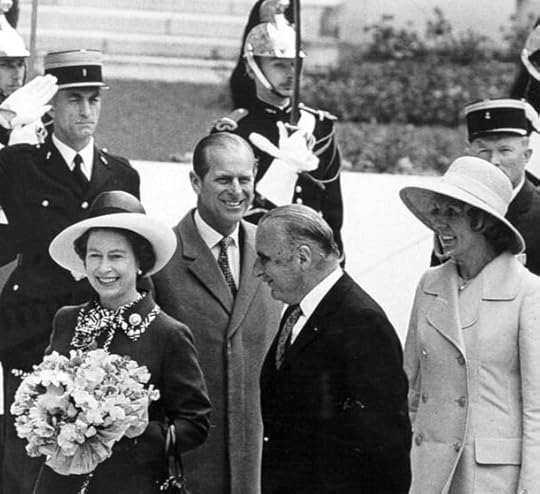
Queen Elizabeth and Prince Philip meeting President Georges Pompidou on their visit to Paris in 1972.
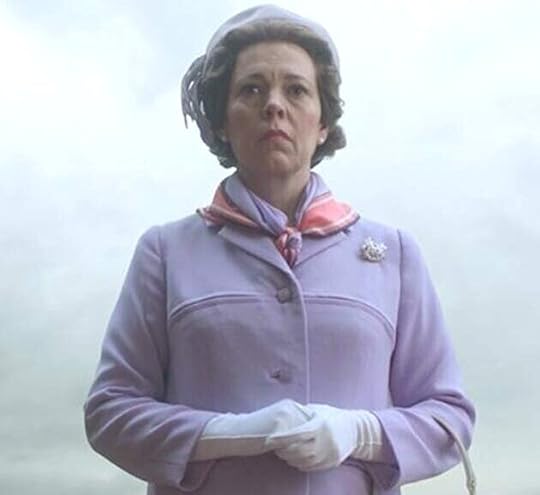
Olivia Colman as Queen Elizabeth in The Crown.
Olivia Colman is so brilliant. Her face changes ever so slightly when Martin tells her that the Duke is dying and she needs to visit him now, just a strange falling of her expression.
The moment the duke hears the queen is coming he struggles to get up. When his wife says “You can’t be serious,” he shouts “I’ve never been more serious!” and forces his way up and out so he can get dressed and at least sit in a wheelchair while talking with her.
He wears lots of green and red for his meeting with the queen. Wallis is also wearing green, matching him as usual. I didn’t figure out where the red was coming from until I realized that this likely is a callback to his red dispatch box as king, which is the first thing Queen Elizabeth focuses on when she enters their house.
In real life, the Duke was still in his bed when the Queen visited him ten days before his death, not in a wheelchair as shown on The Crown, but he still struggled to his feet to bow. In both real life and on the TV show, she seems to deeply appreciate this.
"There was no need for that.” “If the roles were reversed, you would do exactly the same.” She smiles because she knows it’s true. “Yes.”
In their meeting, the Duke says that he underestimated the Queen and works to reassure her about Charles’ fitness for the throne.
“We’ve had our disagreements but you’ve always been my favorite uncle.” “Dear Lillibet.” “Shirley temple.” “I underestimated you. We all did. But the crown always finds it way to the right head. My father, my brother, you, and one day, god willing your son.”
The Duke and Charles together have all the colors of the flag of the United Kingdom in their outfits. The Duke wears a bright coral suit, red pants, and a pink and blue tie. Charles is wearing a grey suit, light blue shirt, and dark blue tie. They’re not the same but they clearly coordinate.
The Queen, as she reads Charles letter, is wearing the same colors as Charles - grey with black lining.
Prince Charles’s letter to the Duke of Windsor: “I do recognize myself in you. Your progressiveness and flair, your individuality and imagination, what a king you would have made in a kinder world. What a king you were denied.” …”I will not be denied what you have been denied. The crown is not a static thing resting forever on one head. It is moving, alive, divine, the changing face of changing times, and if god willing, it has been ordained that I shall wear it, than I shall do so on my own terms, and hopefully make you proud.”
I thought it was so dreadfully sad that the Duke’s dog ran away from his door whimpering when he died. :(
December 1, 2019
How the Six Alternates Change Their Styling For Each Queen
If you’d like to read all my posts about the costumes and styling of Six the Musical, you can find them here !
As I covered in my previous post about Six the Musical, Six is unusual in that its alternates actually wear different costumes than the main queens, in different colors and styles. They indicate which queen they’re playing each night with different hair styling and makeup. I’ve tried to compile pictures of as many alternates as I can playing each role so you can get an idea of how this works!
I should note that there are a few outliers in the styling for each queen; it’s hard for me to tell whether those are due to changing standards over time or what.
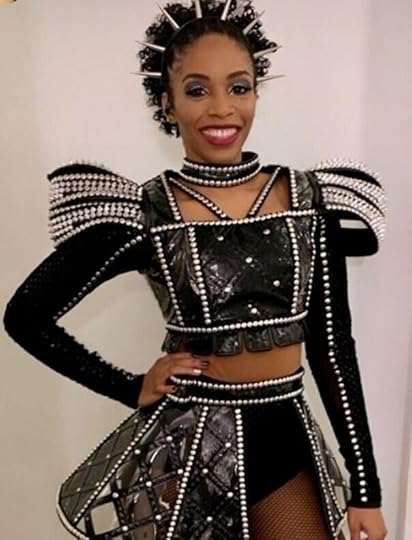
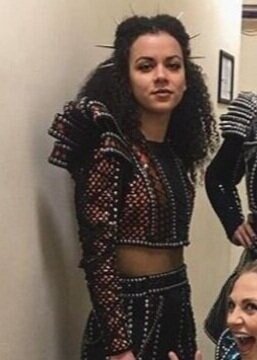
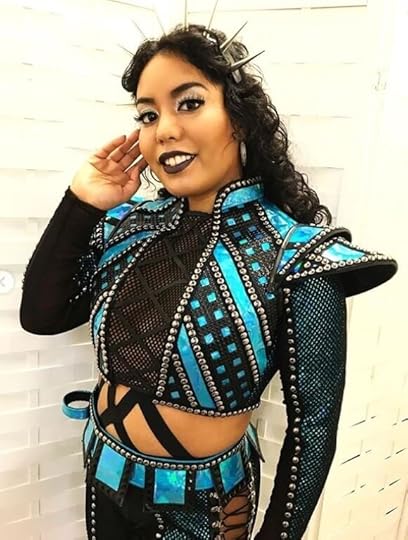
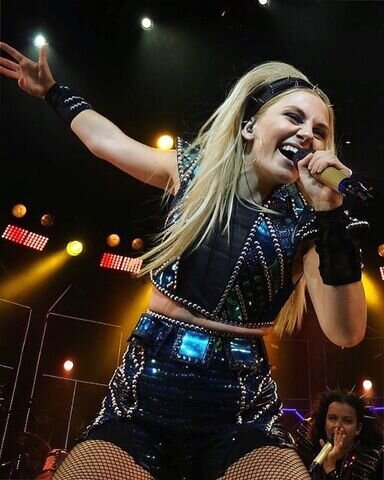
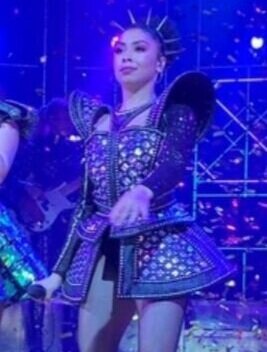
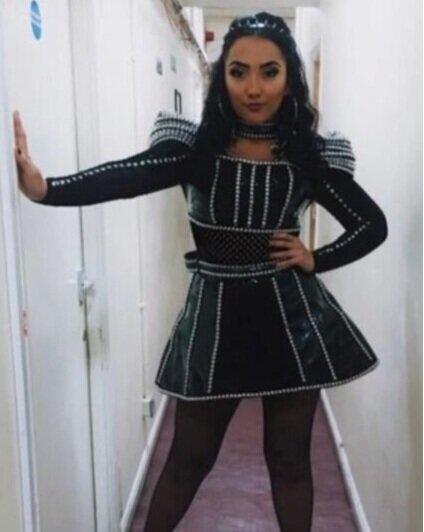
Catherine of Aragon: From left to right on the top row, we’ve got Cassie Levy (UK Tour), Courtney Stapleton (West End), and Nicole Kyoung-Mi Lambert (US), and on the bottom row, we’ve got Vicki Manser (West End), Zara McIntosh (West End), and Grace Mouat (West End). As you can see, Aragon generally has big hair (although this is interpreted differently based on how much hair the alternate has to begin with) and big spikes worn on a headband.
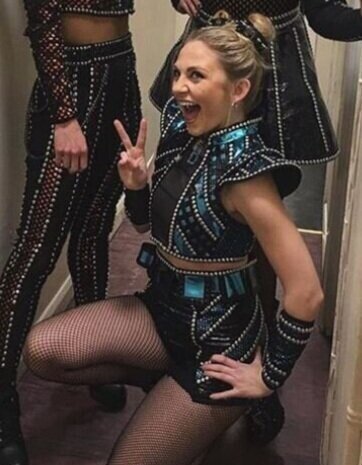
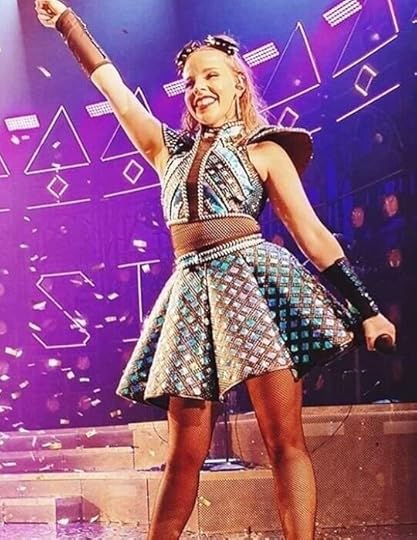
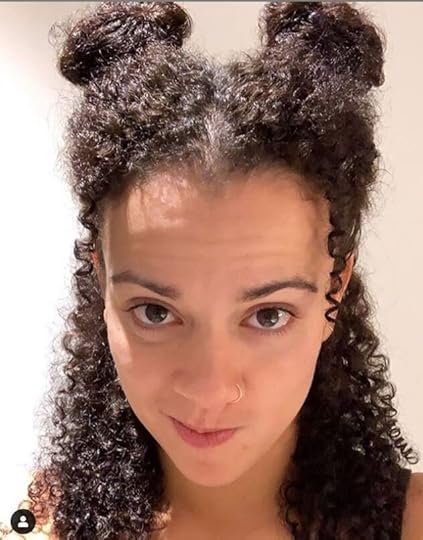
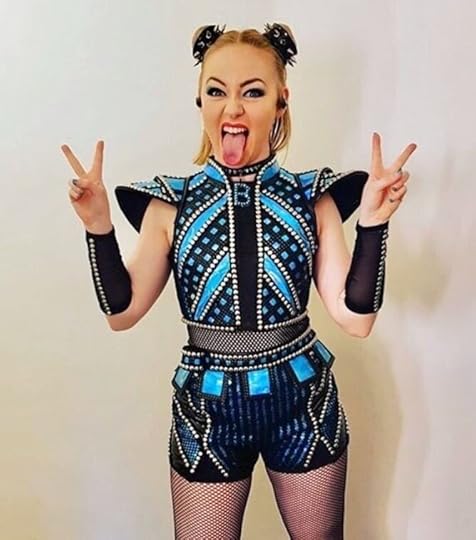
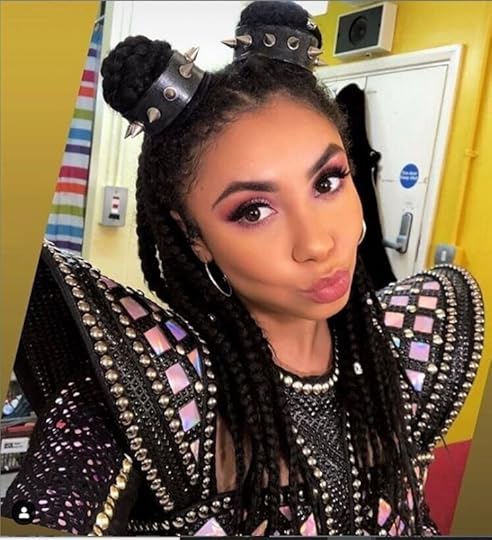
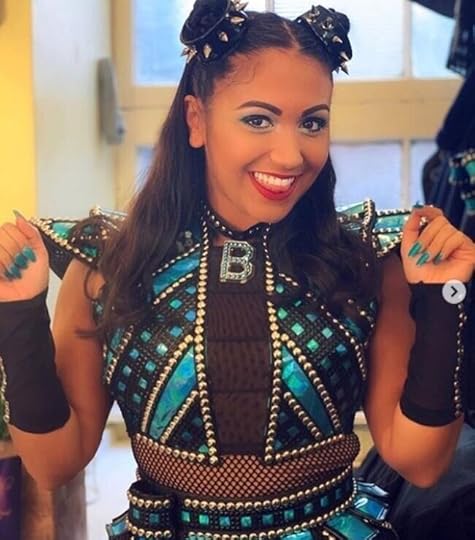
Anne Boleyn: From left to right on the top line: Vicki Manser (West End), Bryony Duncan (Cruise), and Courtney Stapleton (West End) as Anne Boleyn. From left to right on the bottom line: Jennifer Caldwell (UK tour), Zara McIntosh (West End), and Cherelle Jay (West End). Boleyn is portrayed with double buns, usually with half of the hair down and with adorable little spike cuffs around them.
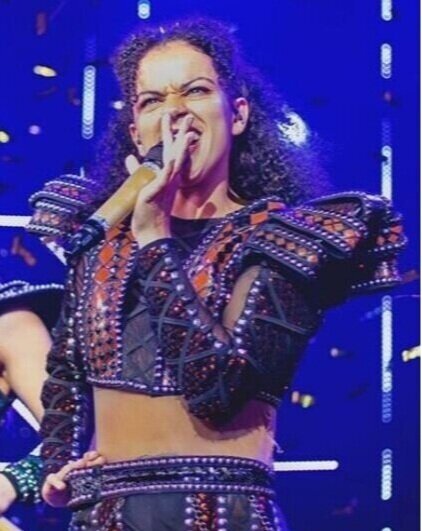
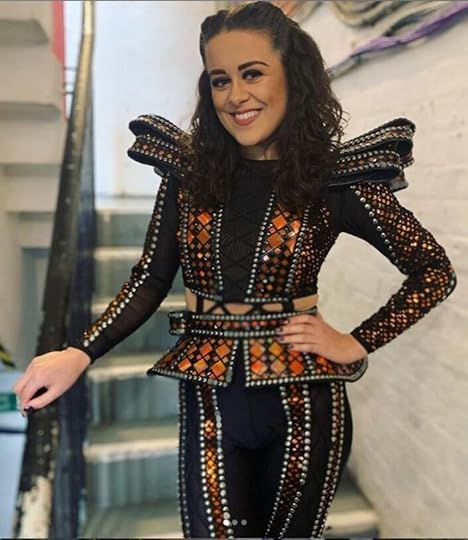
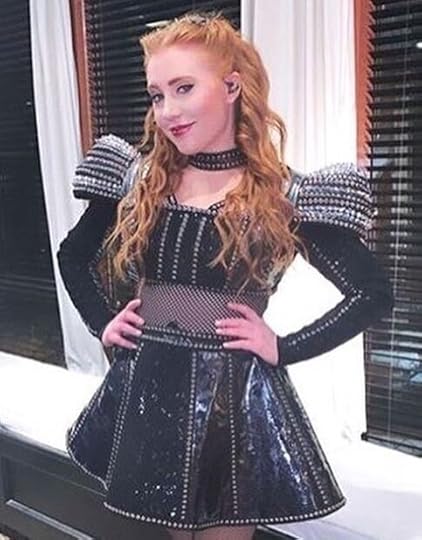
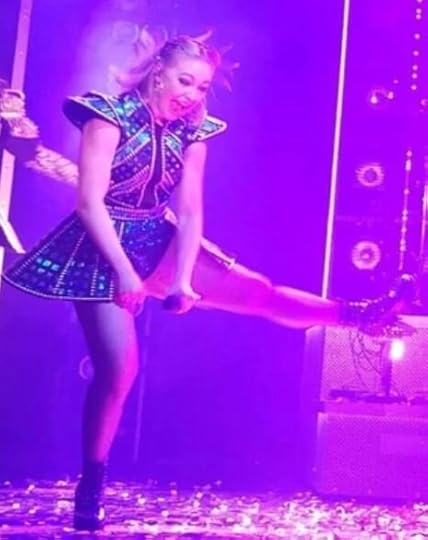
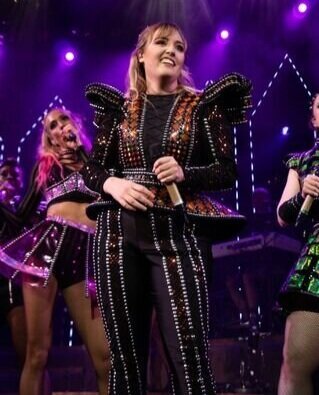
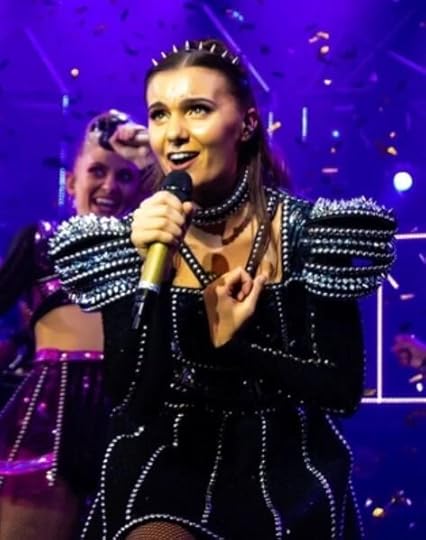
Jane Seymour: From left to right on the top line, Courtney Stapleton (West End), Hana Stewart (West End), and Mallory Maedke (US), and from left to right on the bottom line, Jennifer Caldwell (UK tour), Harriet Watson (UK Tour), and Collette Guitart (West End). Seymour is portrayed with her hair half back with a headband with subtle, small spikes.
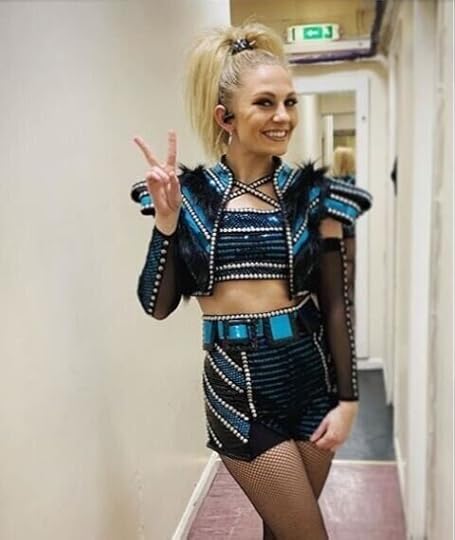
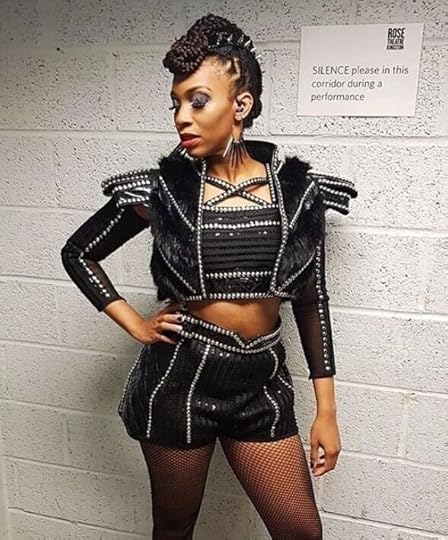
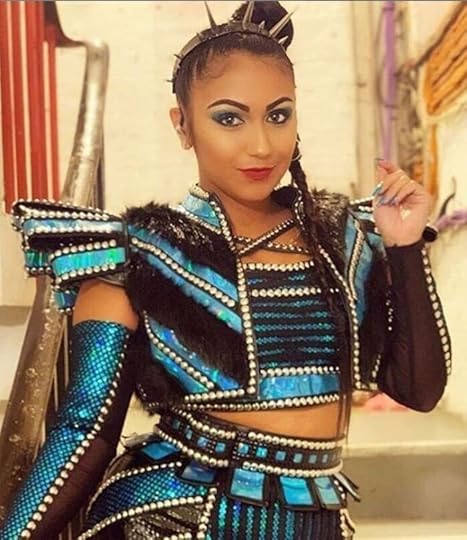
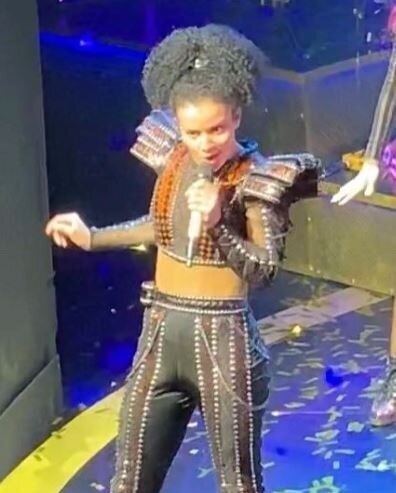
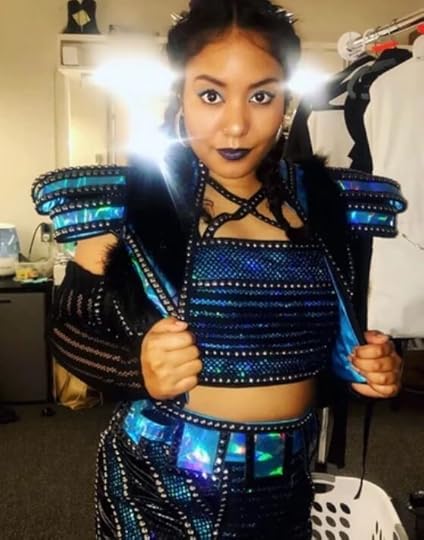
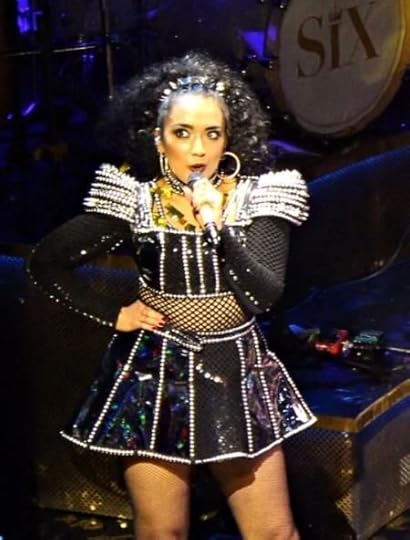
Anne of Cleves From left to right on the top line, Vicki Manser (West End), Cassie Levy (UK Tour), and Cherelle Jay (West End), and from left to right on the bottom line, Courtney Stapleton (West End), Nicole Kyoung-Mi Lambert (US), and Grace Mouat (West End). The Cleves variation on each alternate’s outfit seems pretty standardized, as you pretty much always see her in shorts and a crop top with a fur jacket over it. Cleves’ hair changes up a bit but is generally pulled back with at least some spikes in it, sometimes very big ones, like Aragon’s, and sometimes more subtle ones.
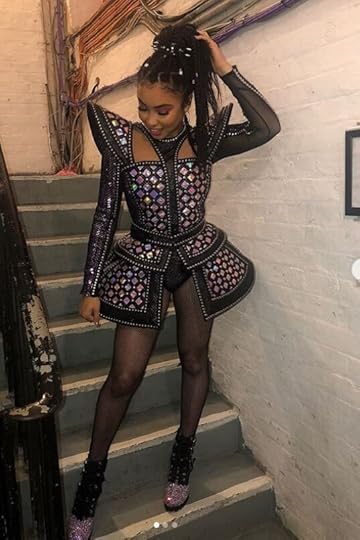
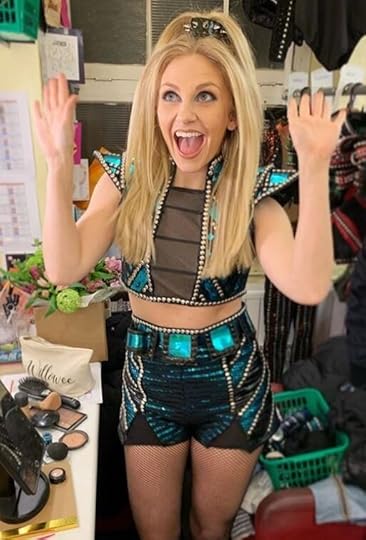
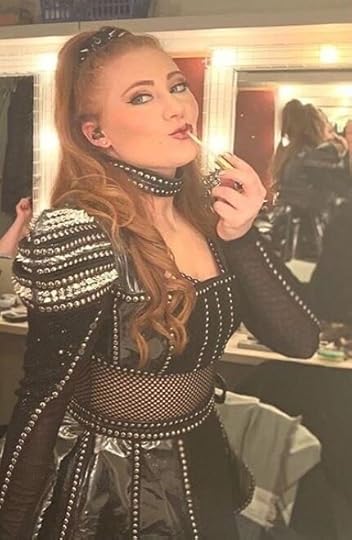
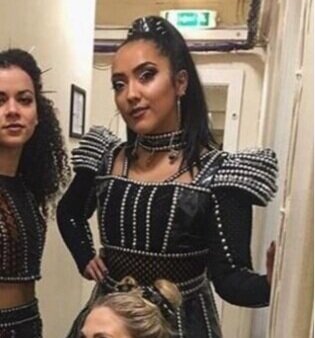
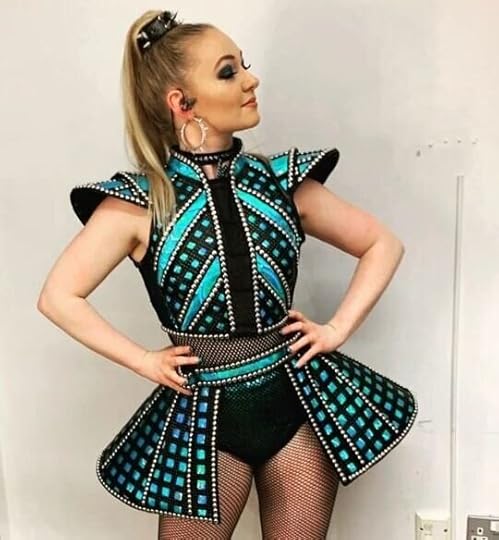
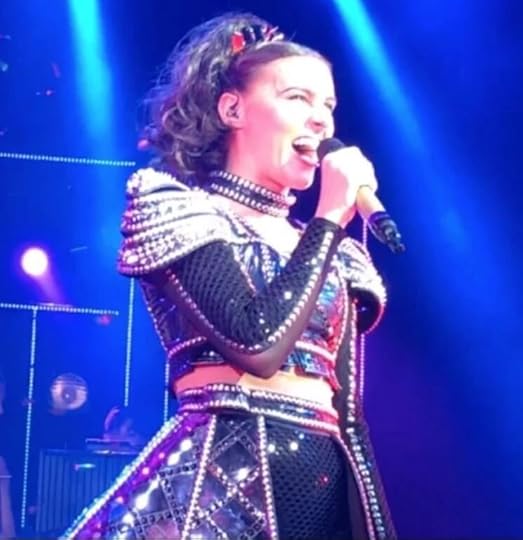
Katherine Howard: From left to right on the top line, Zara McIntosh (West End), Vicki Manser (West End), and Mallory Maedke (US), and on the bottom line from left to right, Grace Mouat (West End), Jennifer Caldwell (UK tour) , and Collette Guitart (West End). Howard is almost always portrayed with a high, long ponytail and a little spike cuff, although it looks like Vicki wears hers half down as well.
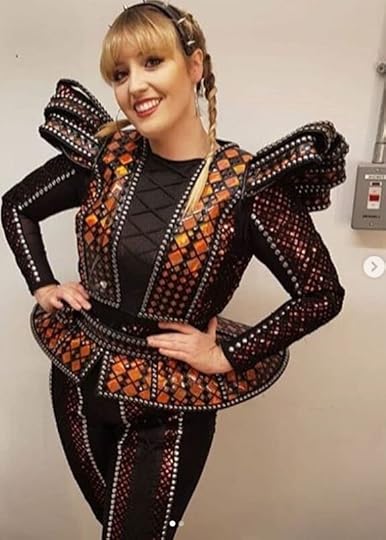
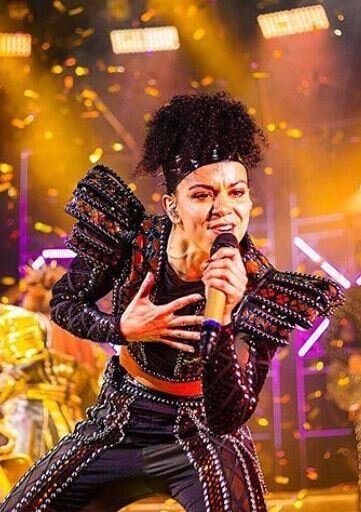
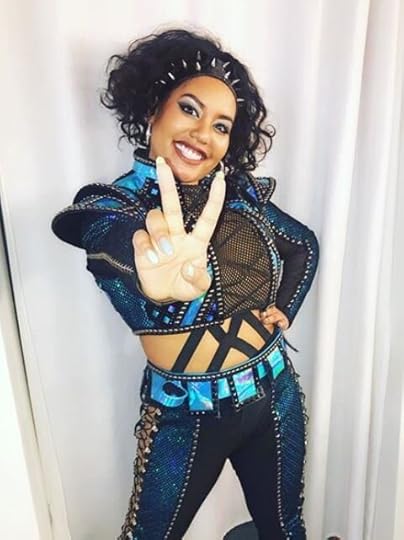
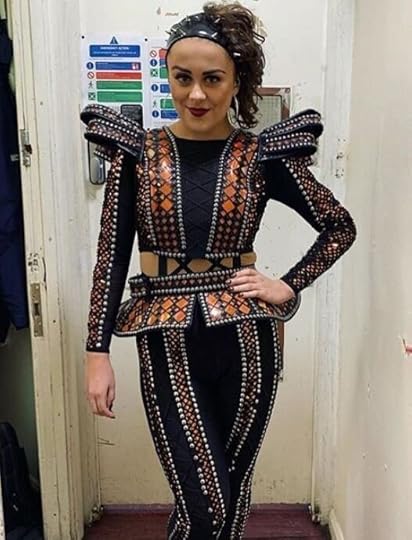
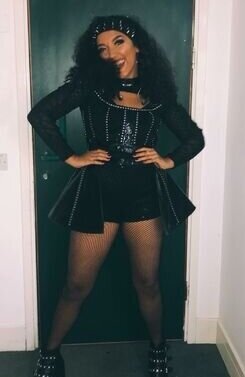
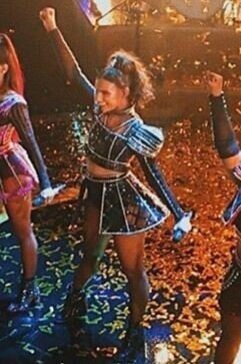
Catherine Parr: From left to right on the top line, Harriet Watson (UK Tour), Courtney Stapleton (West End), and Nicole Kyoung-Mi Lambert (US), and from left to right on the bottom line, Hana Stewart (West End), Grace Mouat (West End), and Collette Guitart (West End). Parr is generally portrayed with a spiky headband (worn more forward on the head than Seymour’s), but it looks like the alternates otherwise have some freedom as to how they style their hair.
November 30, 2019
#ShakespearesPlaylist: A Midsummer Night's Dream
This is part of the #ShakespearesPlaylist series! You can read all of those posts here !
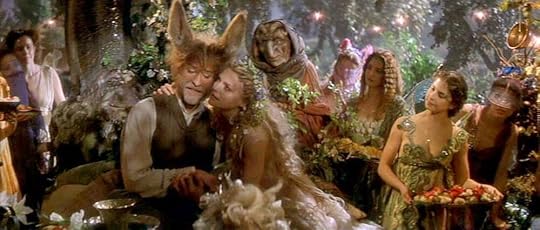
A scene from the 1999 film version of A Midsummer Night’s Dream, featuring Michelle Pfeiffer as Titania and Kevin Kline as Nick Bottom.
So I LOVE finding songs to fit the mood of #Shakespeare plays. Basically every time I hear a song I love on the radio, I think about how I could fit it into a production. I can’t help it. My brain just does that, which is funny, because I’ve only directed one production (my own one-act) and questioned myself and my abilities the entire time, so I don’t necessarily see myself directing anything else any time soon, but I just like to dream about the music anyway.
I’ve decided to play with this habit of mine more and make full-fledged Spotify and Youtube playlists for each play by Shakespeare, under the umbrella name and hashtag #ShakespearesPlaylist .
This week we’re looking at A Midsummer Night’s Dream, one of the most loved and commonly performed Shakespeare plays! And why not? It has fairies, magic, love, mistaken love, hilariously inept actors, and general shenanigans galore; it’s considered one of the most accessible and kid-friendly of the bard’s works. It’s also Shakespeare’s second shortest play at 16,511 words (the actual shortest is Comedy of Errors, which is 14,701 words), which makes it a great choice for community productions and films. You don’t have to make as many cuts to it as you would to say, Hamlet (30,557! There’s a reason it’s rarely performed in full without cuts.), to fit it into a reasonable period of time for a modern audience.
Quick Wikipedia Summary: Midsummer has three main interwoven plots and one plot which serves as a frame story for all the others. The frame story is that the Duke Theseus of Athens and Hippolyta, the Queen of Amazons, are getting married, and everyone’s coming together for the celebration.
The first plot focuses on the lovers- Hermia is in love with Lysander, but her father Egeus wants her to wed Demetrius (to the extent that he threatens to kill her if she doesn’t do what he wants!). Hermia arranges to run away with Lysander and tells her best friend Helena about it, swearing her to secrecy. Helena pines after her former lover Demetrius, who broke up with her to chase after Hermia, and somehow thinks that telling Demetrius about Hermia and Lysander’s plans will endear him to her.
The second plot looks to the fairy king Oberon and fairy queen Titania, who are currently quarreling, as Titania refuses to give a child in her care to Oberon (the child’s mother was one of her worshippers). Oberon summons fairy Puck (also known as Robin Goodfellow) to fetch a flower with magical properties - when applied to a person’s eyes during sleep, that person, upon waking, falls in love with the first living thing they see. Oberon intends to use this to charm Titania so he can steal the child from her while she’s obsessed with some other being.
The third plot focuses on a group of common Athenians (“Rude Mechanicals”) who are putting together a comically inept production of Pyramus and Thisbe to perform at the Duke’s wedding. While rehearsing in the forest, Puck plays a trick on Bottom, the most arrogant member of the troupe, and gives him the head of a donkey, which frightens all his friends away.
These plots all become quickly interwoven. Oberon applies the love flower to Titania’s eyes while she is sleeping so that he can take away the child while she’s distracted; the first thing she sees upon waking is the donkey-headed Bottom. Shenanigans ensue! In addition, Oberon, after seeing Demetrius spurn the pathetic Helena, orders Puck to apply the love flower to Demetrius’s eyes. Puck mistakenly initially gives the flower to Lysander instead, who spies Helena upon waking and professes his undying love for her, abandoning Hermia in the woods in the process. Puck tries to amend this by also giving the flower to Demetrius, but all this does is result in Demetrius and Lysander fighting over Helena, who is convinced that both of them are making fun of her. Hermia flies into a rage over the whole situation and attacks Helena. Further shenanigans ensue!
In the end, Puck removes the flower from Lysander’s eyes and all the lovers end up happy and married by the end. Bottom also is returned to his prior shape as a human and Titania’s love potion is removed after Oberon steals the child; the fairy queen and the king reunite. They all gather together to celebrate Theseus and Hippolyta’s wedding and watch the Rude Mechanicals’ play, poking fierce fun at the hapless actors in the process.
First up on the playlist is The Beatles’ She’s Leaving Home, referencing Hermia running away from her father’s house to be with Lysander. To be fair, he literally threatened to kill her if she didn’t marry Demetrius so…good decision.
Wednesday morning at five o'clock
As the day begins
Silently closing her bedroom door
Leaving the note that she hoped would say more
She goes downstairs to the kitchen
Clutching her handkerchief
Quietly turning the backdoor key
Stepping outside, she is free
She(we gave her most of our lives)
Is leaving (sacrificed most of our lives)
Home (we gave her everything money could buy)
She's leaving home, after living alone, for so many years (bye bye)
Next up is Kanye West’s Heartless, referring to how heartlessly Demetrius treats Helena. Just switch the gender in the chorus lyrics and it applies perfectly to the situation.
“In the night I hear ‘em talk” - everyone knows about what Demetrius did to Helena; Lysander uses it as an example for why Hermia should be with him, and Theseus admits that he’s heard of Demetrius’s behavior and had wanted to talk to him about it.
In the night, I hear 'em talk
The coldest story ever told
Somewhere far along this road, [she] lost [her] soul to a [man] so heartless
How could you be so heartless?
Oh, how could you be so heartless?
David Bowie’s Magic Dance, from the movie Labyrinth, is a personal favorite of mine. I’ve loved that movie since I was just a child. And fortunately, it’s all about magic, dancing and kidnapping children, all things that are very present in Midsummer!
I saw my baby, trying hard as babe could try
What could I do?
My baby's fun had gone
And left my baby blue
Nobody knew
What kind of magic spell to use
Slime and snails
Or puppy dogs tails
Thunder or lightning
Then baby said
Dance magic, dance (dance magic, dance)
Dance magic, dance (dance magic, dance)
Put that baby's spell on me (ooh)
Jump magic, jump (jump magic, jump)
Jump magic, jump (jump magic, jump)
Put that magic jump on me (ooh)
Slap that baby, make him free
Billie Holiday’s You Go to My Head stands for Helena’s feelings for Demetrius. She loves him hopelessly and desperately; even though it seems like their relationship is truly over and he’s not interested any more, she pursues him.
The thrill of the thought
That you might give a thought to my plea
Casts a spell over me
Still I say to myself "Get a hold of yourself"
Can't you see that it never can be
You go to my head
With a smile that makes my temperature rise
Like a summer with a thousand Julys
You intoxicate my soul with your eyes
Though I'm certain that this heart of mine
Hasn't a ghost of a chance in this crazy romance
You go to my head
The Chordettes’ Mr Sandman refers simultaneously to a magical figure bringing sleep and love to the singer and the titular “dream.” After the night is over, all the humans involved in the shenanigans believe they have only dreamed of falling in love with various different people and having donkey’s heads and such.
Mr. Sandman, bring me a dream
Make him the cutest that I've ever seen
Give him two lips like roses and clover
Then tell him that his lonesome nights are over
Mr. Sandman, I'm so alone
Don't have nobody to call my own
So, please turn on your magic beam
Mr. Sandman, bring me a dream
I actually have been really struggling to find a song that represents the Rude Mechanicals and had some trouble. Yackety Sax maybe, but I already used that for my #ShakespearesPlaylist on The Comedy of Errors. What do y’all think? In any case, here’s an old video of The Beatles performing the Pyramus and Thisbe scene of Midsummer with a few other random dudes I don’t know on a variety show they hosted in 1964!
Finally, I’m closing out this post with a video of the recent production of A Midsummer Night’s Dream, put on by my Shakespeare troupe The Britches and Hose! I’m not in it (I didn’t have a car at the time so I didn’t try out, no good way to get to rehearsals), but half my friends are! Also it’s the funniest version of this play I have EVER seen and you can probably hear me laughing hysterically throughout.
What suggestions do y’all have for A Midsummer Playlist? Please commen tor send them to me @RachaelDickzen on Twitter ! I’d love to hear your ideas. :)
November 29, 2019
Overanalyzing The Crown: S3E7 "Moondust"
This post is part of a series on Season 3 of The Crown. All my posts are available here .
Prince Philip has a Very Special Episode dedicated to his midlife crisis and the moon. Also- astronauts, and corgis, and priests, oh my!
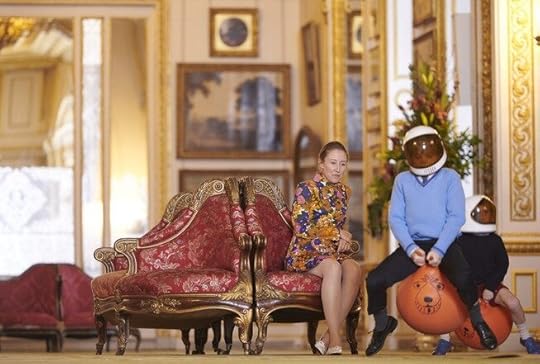
Princess Anne (Erin Doherty) and two children (probably the actors playing her brothers Prince Andrew and Edward) during the rocket launch party scene.
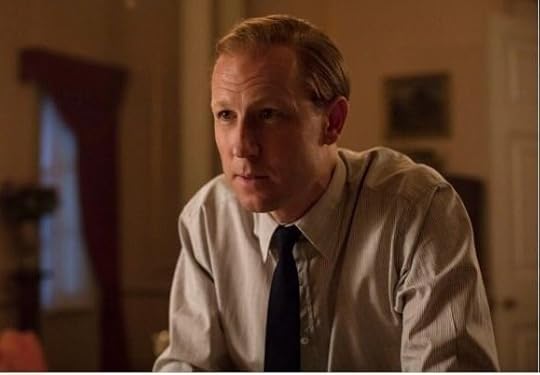
Prince Philip (Tobias Menzies), enchanted by the moon
This may be a particularly quote heavy blog post, as I find Philip absolutely hilarious (if sometimes ridiculously inappropriate). He’s one of my favorite characters and reminds me very much of my own husband, who often says hilariously inappropriate things and is also tall and slim like Philip.
At the start of the episode, Prince Philip is watching the astronauts talk on television while wearing blue and dull green. The queen (also in green) comes in to join him and mentions that she’s sending a message to the moon, which will be inscribed with other messages on a disc and left on the moon along with an olive branch “for the little green men to wave about.” I haven’t noticed much of a color story in this episode, but I do love that they’re both wearing some sort of green while she’s joking about the “little green men.”
Here’s the text of the note the Queen sent to the Moon. “On behalf of the British people, i salute the skill and courage that have brought man to the moon. May this endeavor increase the knowledge and well-being of mankind?
I love how grumpy Philip is when he’s walking up to the church with his wife.
Queen: “[The dean] has been with us for nearly 20 years.”
Philip: “That may make him loyal, but it does not make him interesting.” “Shh.”
This exchange starts off a theme of Philip finding people or events in his life boring throughout the entire episode.
The queen wears a purple hat and just a ridiculously gorgeous coat to church. “They have ears, but they hear not” speech is hilariously on point for Philip. Anne, behind her father, shows a little more restraint and doesn’t cross her arms like he does, but her face still shows how annoying and boring she finds the Dean (like father, like daughter).
Philip-ism about the old Dean of Windsor, as he says that he’s not coming back to church again: “It’s not a sermon, it’s a general anesthetic.” “
Queen: “Is it possible, do you think, the dean, might have reached, how can i put this kindly, the moment of his own obsolescence? I noticed one or two people struggling to stay awake.” (maybe the most British way of saying this ever)
Private Secretary Michael Adeane: “We could discreetly start the search for a replacement.”
”Yes, Good riddance. Someone with a bit of oomph, I think so.”
“Zest.” “That’s it.”
“Pep.” “Yes, thanks.”
“Vim.” “Yes thank you.” I enjoy how Michael Adeane ever so subtly pokes the driest of humor at the queen here in his use of many many synonyms to describe what she wants in the new dean. He’s been her private secretary for 16 years as of the time of this episode (which is partially why it’s so unbelievable/funny when Philip can’t remember Michael’s name in a few episodes after he retires) and they clearly known each other very well at this point.
The practice polo cage Philip uses in one scene to outrace His Demons is so fucking ridiculous looking.
I was curious as to why they seem to be at Windsor for most if not all of this episode and looked it up. As this Harper’s Bazaar article on the royal residences states, “Buckingham Palace is the Queen’s working residence during the week when she and the Duke of Edinburgh are based in London. However, they go to Windsor Castle most weekends, spend each August and September at Balmoral Castle in Scotland, and head off to Sandringham House in Norfolk every Christmas.” So it makes sense that they’re at Windsor most of the time, since most of this episode seems to take place on Sundays (Apollo 11 launched on a Wednesday and the moon landing took place on a Sunday).
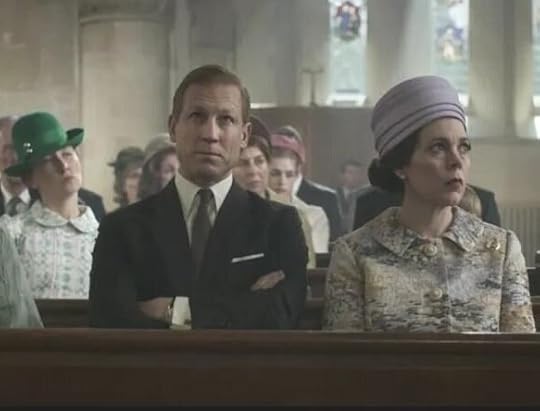
Prince Philip and Queen Elizabeth at church in The Crown
It looks like a really amazing rocket launch party. There’s a lunar module cake and they have like astronaut helmets and space banners and rocket party hats. I wish I could find ANY screenshots of it to share here. I particularly enjoy the little quick background scene where Anne carefully places multiple party hats on her sleeping grandmother, with Margaret’s help. Charles also appears to be present, if in the background, and he looks pretty happy to be hanging out with his family, so perhaps he and the Queen have mended things up a bit since the last episode.
Philip looks even more excited about the rocket lift off than any of the children and it’s pretty amazing.
Philip-ism, as he looks for his wife: “If I say She and we’re in Buckingham palace, who do you think I mean?”
I literally didn’t even realize Margaret and Tony came to the rocket launching party at first, because Margaret is wearing a dark brown dress that is just so damn toned down for her. We really don’t spend any time with them in this episode, but based on the Margaret and Tony episode we get at the end of the season, I’m guessing the dark brown might indicate the sad state of their marriage. It’s also barely ever mentioned in the series, but they have two children themselves, named David and Sarah. You can read all about them here.
As was hinted at in S2E7 Matrimonium, Tony did, in fact, have an illegitimate child with Camilla Fry, the wife of his friend Jeremy Fry (The Crown portrayed Tony and the Frys as having a three-way relationship, which is alleged in the 2008 book “Snowdon: The Biography” but hasn’t been fully substantiated). His daughter, Polly, was born a few weeks after he married Princess Margaret; his paternity was confirmed by a DNA test in 2004. “Snowdon: The Biography” also alleged that Jeremy Fry was actually intended to act as Tony’s best man at the wedding, but had to drop out due to illness.
As he sits up to watch the moon landing, there are American flags behind him and a toy astronaut in front of him.
I love that Philip asks the staff to wake up all the children to see the moon landing. We get a really quick montage of all the butlers and maids gently shaking Andrew and Edward awake and helping them put their robes on.
Anne’s dress in the moon landing scene is really cute – black, with multicolored lines on a slightly offset bit.
The newspapers Philip is reading when he’s ignoring his private secretary not only talk about the race to the moon, but also mention a few other things that seem to emphasize other men’s achievements. “Man dies saving daughter” stands in. He’s wearing a tie that’s dark blue with little white dots on it, vaguely reminiscent of the moon. He’s also wearing his military coat here, which seems to refer to his longing for his lost career. Basically, everything in this scene emphasizes Philip’s midlife crisis.
Philip-ism: “British Concrete Society, is that a joke?”
Sidenote: The concept of a “midlife crisis” was first named in 1965, so the concept is still relatively new when this episode takes place. Philip does admit at the end that he’s going through a crisis, but he avoids actually calling it a midlife crisis. Wikipedia defines a midlife crisis as “a psychological crisis brought about by events that highlight a person's growing age, inevitable mortality, and possibly shortcomings of accomplishments in life.” Plenty of people don’t have midlife crises, but of those who do, a death of a loved one is often a precipitating factor. “Moondust” almost unfolds like a mystery, in a way, as we don’t realize until the very end that Philip is experiencing these feelings primarily because of his mother’s death, which hadn’t previously been revealed.
Philip’s private secretary gives some choice knowing glances as the new priest discusses his priest sanctuary idea, seemingly realizing that this is exactly the situation Philip is in.
Philip-ism: “But If one of those buildings is free and you want to fill it with hot air and thought, be my guest.”
Tobias Menzies has the most ridiculously expressive eyes, which he uses to great effect as Philip. This is a much quieter, less dramatic role than his role as Jack Randall in Outlander, and although Philip is funny, he’s not as hapless or pathetic as Edmure Tully in Game of Thrones, but I think it may be the finest work he’s ever done.
Philip doesn’t have the anger that he did in the first two seasons and he definitely seems more “settled” (which was pretty much the Queen’s end goal in Season 2), but there’s kind of a new hopelessness, as he stays up late every night to watch all the space and moon reports, the lone holdout among his family. He even cries a little at the sight. As he goes through his various duties, at a textile mill, at a dental prosthetic lab, he’s smiling, but he just looks a little lost.
It seems like Philip’s wrinkles are much more emphasized than we’ve seen previously. This may be because we’re getting tighter shots on his face as he' focuses on the space mission, but the show also definitely uses makeup to subtly age the actors throughout the season. They definitely look older and look their character’s age, which supports the decision to replace the Season 1 and 2 actors with older actors for season 3. I feel like if Claire Foy had continued to act as the Queen, you’d have an “aging” look similar to how Clare and Jamie look in Season 3 of Outlander, after supposedly 20 years have passed. They both look older then they did, but they’re also the youngest looking 40-somethings I’ve ever seen in my life. It’s just hard to make really young actors look like they’re entering middle age.
Apparently most of the main actors also wear wigs in order to properly replicate their character’s hair color and period-accurate hair styles. Thinning hair, graying hair, and changing hairlines in the wigs also help age up the actors as the season progresses. I couldn’t find a definitive list anywhere (there’s a lot more info about Season 1-2 still than there is about 3), but the Queen, Prince Philip, and Princess Margaret definitely all wear wigs.
If you’d like to read more about how accurate the makeup on The Crown is to real life, Harpers Bazaar Australia did a pretty great article on the makeup seen in the first two seasons.
Then we get a shot of Philip flying for the first time this season; I’m pretty sure this is put in here not just to emphasize Philip’s discontent with his life but also to remind us of this part of his life before he later asks to meet the astronauts privately so they can talk “pilot to pilot.” I really enjoyed how the pilot frantically buckles his seatbelt back in as Philip takes over the controls and starts aiming the nose to the moon, going as high up as he can, much higher than the pilot would have taken it. When the pilot says that they need to get down from the elevation quickly, Philip replies, “But look, we’ve also lived. Just for a minute.”
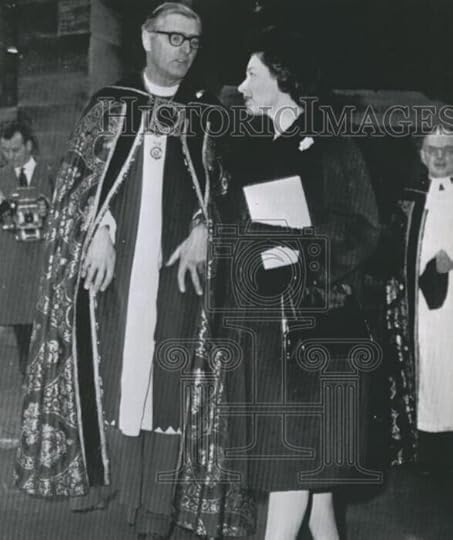
Dean Robin Woods with the Queen at a memorial service for President John F. Kennedy
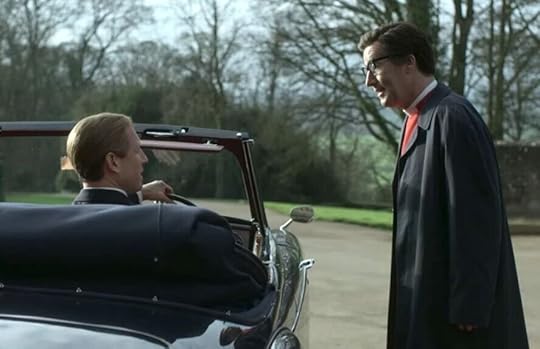
Tobias Menzies as Prince Philip with Tim McMullan as Dean Robin Woods in The Crown
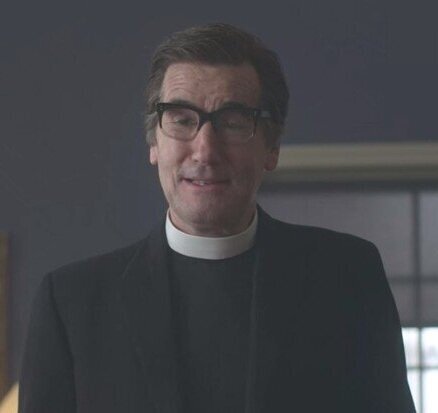
Tim McMullan as Dean Robin Woods in The Crown
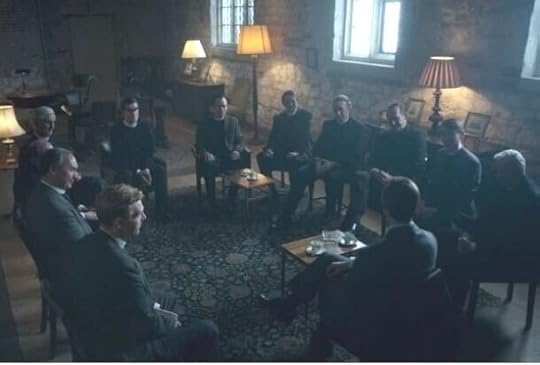
A scene set at St. George’s House in The Crown
I have a theory that the queen specifically asked Dean Woods to check in on Philip and help provide him some guidance through his current crisis and feelings of loss. Right before the rocket launch party when Prince Philip asks her about the new dean, she says cagily that he’ll be a good fit “for the job I’ve asked him to do.” She then looks at her husband with a knowing smile. And then Woods is extremely persistent in engaging with Philip, even after Philip makes it very plain that he doesn’t really want to spend time with him or any of the priests.
Dean Woods gives a sermon about exploration and space that would have been great for Philip to hear. The queen definitely seems to think this, as she looks next to her and misses him. But Philip is off trying to outrace his own demons by jogging through the grey-skied countryside because he has Feelings. As the audio of Dean Woods’ speech continues over his running though, we hear heavy breathing, like that of the astronauts' over their radios to space. Neither the scene immediately before or immediately after this one have any footage of the astronauts themselves, so this has to be Philip’s breath, intentionally laid over the audio to emulate space.
The bit of Woods’ speech we can hear before it trails off into Philip’s overwhelming ennui goes: “We shall not cease from exploration, and the end of all our exploring will be to arrive where we started and know the place for the first time. Those words by T.S. Eliot have never rung more true. We stand at the dawn of a new age of space exploration. The promise of space has never felt more real….”
The new dean of the church at Windsor wears a red shirt and cassock sometimes. This is apparently pretty normal in the Anglican church.
Philip-isms about Dean Woods’ spiritual retreat for priests: “Your concentration camp for spiritual defectives.” “Do I need to show symptoms of despair? Should I sigh and moan dramatically. One does like to fit in.”
Philip trying to pretend that he cares about the priests’ problems is pretty hilarious. They talk about their “sense of directionlessness and redundancy” and how they feel like they’re failing to connect with the people. Honestly, they’re pretty much summing up Philip’s issues and he’s just in total denial.
I love that Philip admits that his new religious faith is basically the moon and the space race. He at least knows himself!
Dean Woods quotes Keats in response to Philip’s observation that the space race and the moon have become some people’s religion: “What is there in thee, moon, that thou shouldst move my heart so potently?” He then continues on, “Now we know what the moon is - nothing. Just dust. Silence. Monochromatic void. We see no god beyond those rocks and space dust, simply an unknowable vastness.” Then he switches to Psalms 8:3: “When i consider the work of thy heavens, the work of thy fingers, the moon and the stars that thou hast ordained, what is man, that thou art mindful of him, and the son of man, that thou visitest him?
The Keats quote is from a poem called Endymion, which you can read in full here. I’ll admit, I often am skeptical of characters just quoting a perfect poem at the perfect time in period dramas without rehearsal, as Dean Woods does here. We also see Margaret and Tony quote poetry at each other when they first meet at a party in Season 2. But I try to remind myself that people had a lot less entertainment in the past and read and memorized more than we do now, just as plenty of us can recite various quotes from our favorite movies, TV shows, and pop songs.
Though Philip had actually been trying to be tactful for once in his life, when Dean Woods actually asks for his opinions, he lets loose his vitriol pretty ferociously. “Me? You want my thoughts? Really. Okay, right. I’ve never heard such a load of pretentious self pitying nonsense. What you lot need to do is get off your backsides, get out into the world, and do something. That is why you are all so lost.” He then continues to wax philosophic about how action is what defines us, not suffering, and says that men need to make their mark on the world. These beliefs all hearken back to his schooling at Gordonstoun, which were examined pretty thoroughly in S2E9 Paterfamilias, and his young adulthood in the British Navy.
He also calls them all “navel-gazing underachievers infecting each other with gaseous doom” and tells them “If you want to start with action, clean up the floor.”
Another Philip-ism comes up when they’re eating dinner, as he jokes that he’s eating so much venison that he’s going to turn into a deer. “I’m listening, with brown furry ears.”
THE CORGIS WANT VENISON. Well of course they do. Good puppiessss (y’all, I want a corgi SO BADLY, you have no idea. But husband John says he’ll only agree to me having a dog when I get a New York Times bestseller).
By the way, the dogs playing the Queen’s corgis apparently eat just a boatload of cheese on set.
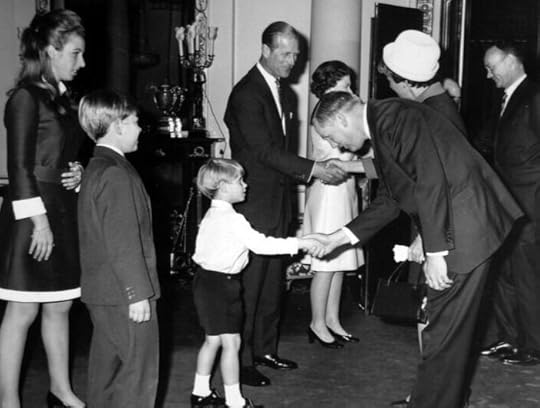
The Apollo 11 astronauts meeting the royal family at Buckingham Palace. In real life, Prince Philip was right there with his family meeting the astronauts. He also didn’t have a personal meeting with them (as the episode depicted).
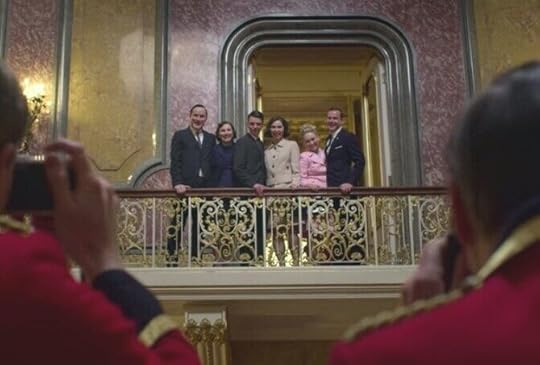
The actors playing the Apollo 11 astronauts and their wives at Buckingham Palace in The Crown.
Philip is obviously delighted when the Queen tells him that the astronauts are going to come visit the royal family. The Queen says, “I thought that would cheer you up. “Do I need cheering up?” “A little.”
It’s sweet how she so obviously knows him better than he knows himself. Right before his meeting with the astronauts, the queen stares at Philip with obvious concern, like she’s not quite certain how he’s going to react to anything.
Various stray thoughts about the astronauts’ visit to Buckingham Palace: Philip is basically a kid on Christmas morning when the astronauts come; he is absolutely way too excited. And he’s not the only one. Even the BUTLERS and the maids and footmen are excited, racing to the windows to see them, even though as staff of the royal family, they’ve obviously seen a lot.
I laughed out loud at the background bit in which Margaret lights a cigarette and says “Please don’t tell me you want to talk about children” to one of the astronauts’ wives, who looks suitably flabbergasted.
We really get to see Anne and her little brothers interact with each other and other family members for the first time this season. Anne at one point shoves her little brother out from behind her to meet Neil Armstrong.
The Queen wears a blue dress with a white purse that’s very similar to what she wore in real life, but not identical. I always wonder why they made the little changes they do - like why this dress has sleeves added, but the dress Jackie Kennedy wore to Buckingham Palace in season 2 has sleeves taken away.
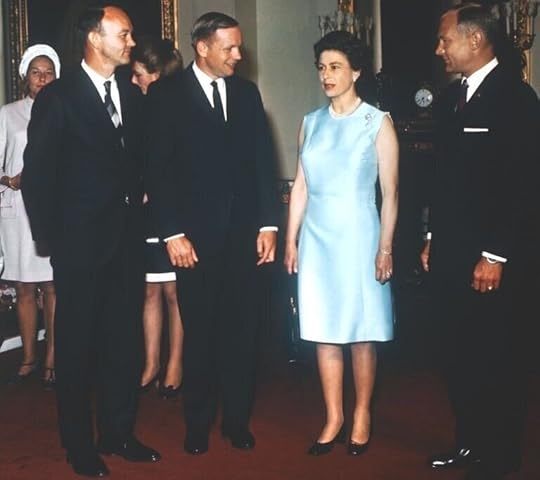
Queen Elizabeth meeting the Apollo 11 astronauts at Buckingham Palace.
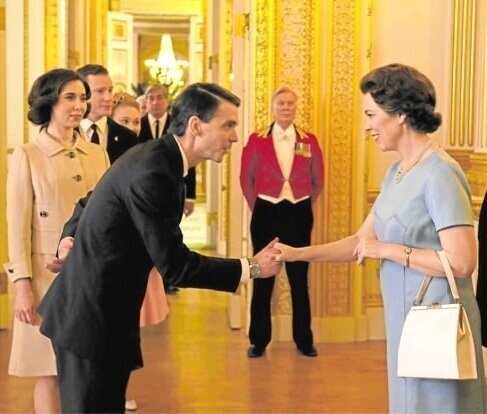
Olivia Colman as the Queen meeting the Apollo 11 astronauts.
In the episode, the astronauts all have colds and Prince Philip runs out of handkerchiefs to give them. In real life, only Neil Armstrong is known to have had a cold at the time of their meeting, but it apparently was bad enough that he considered backing out of the meeting. However, his wife had other ideas. “She told me that if I had to be embalmed, we were going to see the palace,” Neil Armstrong said. “She wanted to see the place.” He apparently coughed on the Queen and when he tried to apologize, coughed on her again. His illness was apparently memorable enough that the Queen later asked an acquaintance about Armstrong’s health.
Buzz Aldrin also revealed on Twitter in 2016 that "Mike Collins almost fell down the stairs trying not to turn his back on Queen Elizabeth II."
Historically, the queen had met space travelers before this visit and continued to show interest in space afterward. She met Yuri Gagarin, the first man to go into space, in July 1961, and Valentina Tereshkova, the first woman in space, in 1964. She also met an astronaut from Apollo 8 prior to the Apollo 11 astronauts’ visit. When Apollo 12 returned to the moon in November 1969, she woke up early to watch TV coverage of the event.
It appears that, for their meeting with Prince Philip, the astronauts are placed in the same big room that Princess Alice was exploring when the journalist found her there in S2E4 “Bubbikins.” Is that the big, grand room they use to impress visitors? This also ties the episode back to Philip’s mother, whose name has not actually been spoken as of this point in the episode.
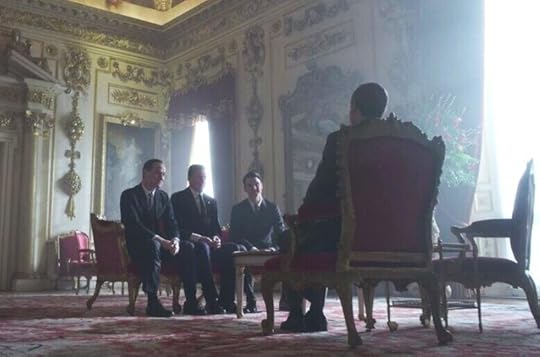
Neil Armstrong (Henry Pettigrew), Buzz Aldrin (Felix Scott) and Michael Collins (Andrew Lee Potts) in a scene with Prince Philip (Tobias Menzies)
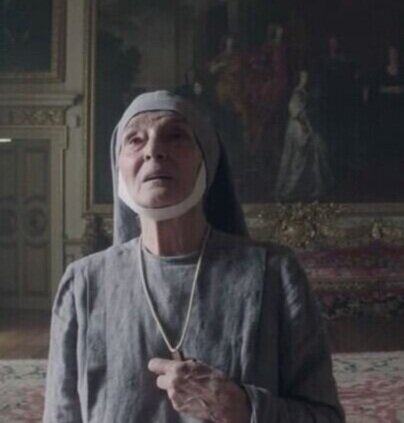
Jane Lapotaire as Princess Alice in The Crown.
Philip’s meeting with the astronauts is super awkward, with lots of long silences, and disappoints him. He tries to ask the astronauts big profound questions about how they felt up in space, e.g., what their thoughts were out there about humans’ place in the universe, but the astronauts respond that they really didn’t have time for thinking of that, as they were constantly busy performing different procedures and checking items off the list. This is exactly how he guessed it would be earlier in the episode, when he told off the priests at St. George’s house. “Action is what defines us, Action, not suffering - all this sitting around, thinking and talking. Let me ask you this, do you think those astronauts up there are catatonic like you lot. Of course not, they are too busy achieving something spectacular. And as a result, they are at one with the world. At one with their god. And happy.”
He was terribly disappointed when the astronauts’ most profound observation to him was that their water cooler in space sucked and kept them awake with noise. They then took the opportunity to ask him lots of mundane questions about his life - how many rooms are in the palace, how long the hallways are, and how many staff they had, before the audio trails off.
Philip later comments to the queen: “I don’t know what I was thinking. I expected them to be giants, gods. But in reality they’re just three little men, pale-faced with colds.”
The Queen notes in response that the very qualities that make one a good astronaut (their sense of duty, reliability, modesty) and perfect in a crisis are not necessarily those that make for a really interesting person (originality or inventiveness). It almost seems like she’s talking about herself and Margaret again, hearkening back to her discussion with Philip at the end of S3E2 Margaretology about the dull, trustworthy people vs. the interesting, unreliable people of her family. “They never wanted to be public but because of one event, they will be forever.” “They delivered as astronauts but they disappointed as human beings.”
They must have known what they were getting into though, right?
Philip-ism: “Good job there were no little green men. They could be forgiven for thinking, ‘if that’s all planet Earth has got to offer, let’s give the place a miss.’”
After the astronauts disappoint him terribly, he pauses by the staircase leading up to his mother’s empty room and walks up to look around at it sadly. He then goes to St. George’s again and finally admits that something’s been wrong with him lately; although he’s generally a cantankerous person, he’s been over-exercising, over-zealously following the space race. He talks about his mother’s death and his own lack of faith for the first time in the episode, says straight out that he’s desperate and lost, and asks the priests for help.
Sidenote: He says something slightly mysterious while talking about his crisis. “Just like [other people hitting that crisis, you resort to all the usual things to try to make yourself feel better. Some of which I can admit in this room and others which I probably shouldn’t.” This seems to imply that he may have committed some big sin he can’t talk about with the priests. Just like in the second season, where Philip never actually denies that he’s cheated, it’s left really ambiguous as to whether Philip has had affairs or not.
As the end of the episode notes, St. George’s House is a real organization that Prince Philip helped found (although in real life, it was started a few years before the moon landing occurred). He also was apparently quite a bit more enthusiastic about the concept from the get-go than is portrayed here. You can find out more information about the founding of St. George’s House here.
Wonderfully, the entire episode seems to fulfill the T.S. Eliot quote from Dean Woods’ sermon. “We shall not cease from exploration, and the end of all our exploring will be to arrive where we started and know the place for the first time.” After meeting the astronauts and trying to find meaning in the space race, he finally comes back to the priests and admits that he’s been lost since his mother’s death; he is coming back to where he started and now knows himself better.
November 28, 2019
Details, Themes, and Foreshadowing in Frozen II
I just watched Frozen II last night with some friends and it was such an incredibly powerful movie. I cried a few times, I think. So now I’m going to analyze it, as I do everything. :D Obviously this is going to be full of a shit-ton of spoilers, so don’t read this if you don’t want that.
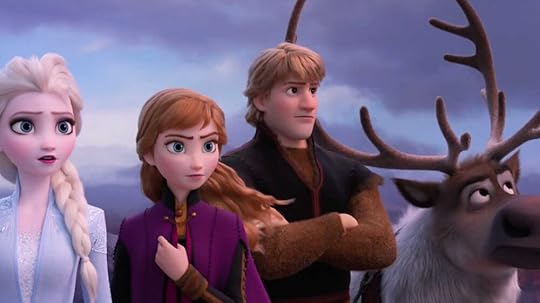
Elsa, Anna, Kristoff, and Sven in Frozen II
I should start off with a brief discussion of what the first movie meant to me. I watched Frozen with a friend in law school and Let it Go immediately spoke to me. Yeah, I know, everyone’s sick of it and it was ridiculously overdone there for a while, but the lyrics very specifically evoked my own issues with embracing my own disabilities - depression, ADHD, and chronic pain. It was all about letting go of your shame and fear, letting go of other people’s expectations, throwing away the need to be perfect, and loving yourself on your own terms. I have been that person afraid to show the world who I am before, so I identify with this song very strongly. The one ironic thing is that I actually HATE the cold with a passion (and particularly snow and ice).
I’m not the only one either - plenty of people have called it a disability anthem, a coming out anthem, and a song about growing up and becoming an adult. My friend Michael wrote about its meaning for his own life here.
It’s also pretty awesome that it shows Elsa transforming her outer look purely for herself, not for anyone else.
I’ve heard some people criticize it for a nihilistic worldview, and some argue that a specific scene in Frozen II is anti-Let It Go and shows its worldview as something not to be emulated or admired (I’ll discuss that later), but I think it’s extremely empowering for what it is. It’s not a song intended to speak all situations; it’s a song about embracing yourself just as you are, in that moment. And that’s really wonderful.
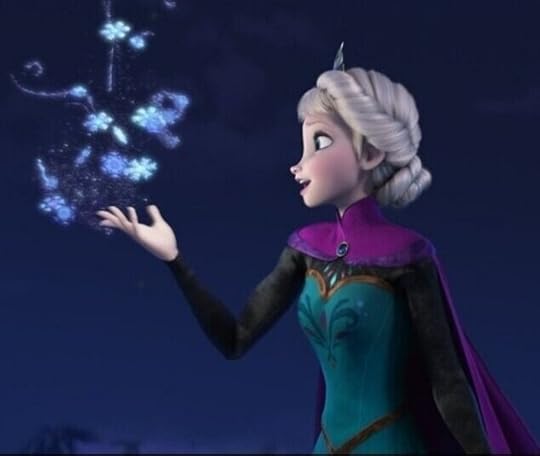
Elsa singing “Let It Go” in Frozen
The wind is howling like this swirling storm inside
Couldn't keep it in, heaven knows I've tried
Don't let them in, don't let them see
Be the good girl you always have to be
Conceal, don't feel, don't let them know
Well, now they know
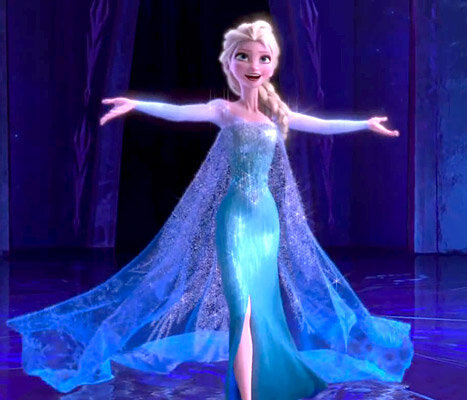
Elsa singing “Let It Go” in Frozen
Let it go, let it go
Can't hold it back anymore
Let it go, let it go
Turn away and slam the door
I don't care what they're going to say
Let the storm rage on
The cold never bothered me anyway
It's funny how some distance makes everything seem small
And the fears that once controlled me can't get to me at all
It's time to see what I can do
To test the limits and break through
No right, no wrong, no rules for me
I'm free
Let it go, let it go
I am one with the wind and sky
Let it go, let it go
You'll never see me cry
Here I stand and here I stay
Let the storm rage on
I love that the first imagery you see in both movies (once you get past the production credits) is something from nature; in the first film, you see snowflakes, and in the second film, you see autumn leaves. The leaf seems to symbolize a big theme of the movie, namely, change. In the beginning scenes, a lot of people talk about how difficult change is, how hard growing up can be, or about how things are perfect they way they are; yet just as the leaves change color each fall, change happens in our lives and we just have to deal with it. As Olaf says, “How I wish it would stay this way forever. Though, change mocks us” And Elsa sings, “Is something coming? I'm not sure I want things to change at all These days are precious, can't let them slip away I can't freeze this moment, but I can still go out and seize this day.” This theme will come back throughout the movie, including in Olaf’s song “When I am Older.”
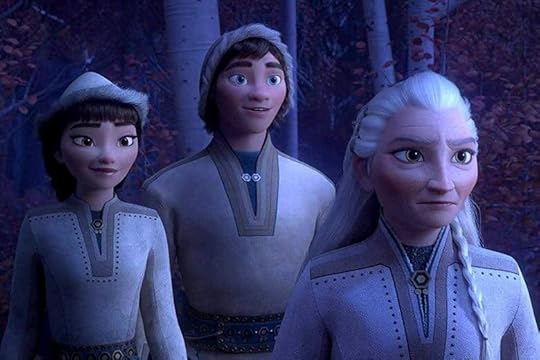
Honeymaren, Ryder, and Chief Yelana of the Northuldra in Frozen II
Frozen II starts off with the same song that was used in the first movie. This gorgeous acapella song is called “Vuelie” (which translates to something like “song”) and is based off of an older song called Eatnemen Vuelie (Song Of The Earth). This song is specifically jolk, an indigenous form of music that was actually historically outlawed in Scandinavia. From what I’ve read online, the remaining “Na heya” words don’t mean anything and are lyricless sounds, like “la la” in English.
The second movie does a LOT to try to remedy the overwhelmingly white nature of the first film, which used a song from the indigenous Sami and put blonde Kristoff in a Sami-inspired outfit, but didn’t involve any consultation with the Sami and featured no diversity whatsoever (if you’re someone who’s ranting about how there were historically no non-white peoples in Scandinavia, one, you’re wrong, the Sami have lived there for over 3,000 years and African immigrants started coming to Scandinavia in the 17th century, and two, this is a friggin’ fairy tale movie, it’s not like there was historically a woman who shot ice from her hands either).
For starters, Disney actually partnered with representatives from Sami communities on the movie, bringing experts to their headquarters to talk to the Frozen II animators. They signed a benefits declaration with the representatives stating that the Sami would receive proper representation in the movie and a Sami language version of the film will be released.
The Sami are represented as the fictional Northuldra in the movie, led by their chief Yelena. They have been trapped in the enchanted forest for the last 34 years. They, like the Sami, appear to be reindeer herders. We meet and know multiple of the Northuldra by name during the movie and see several of our main characters interact with them. They’re treated like actual people, not just props. It’s pretty awesome.
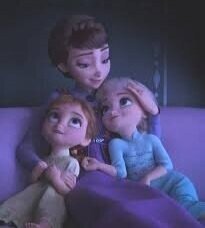
Iduna, Anna, and Elsa in Frozen II
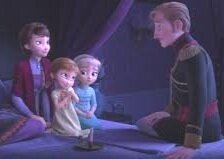
Queen Iduna, Anna, Elsa, and King Agnarr in Frozen II
Next, we get an adorable flashback, with a scene of Anna and Elsa as children with their parents, just like the first movie. This scene takes place before the earliest flashback in Frozen, as Anna still knows about Elsa’s magic and they’re playing together with ice figurines Elsa has made. The girls appear to be the same approximate size/age as they are in the first movie, and they’re wearing the same nightgowns and hair accessories, so it’s possible that this scene actually is meant to take place immediately before the events of Frozen that lead to Anna’s memories of her sister’s magic being taken away.
When they ask their parents about enchanted forests, their father King Agnarr tells them the story of how he became king. From his viewpoint as a child, his father built a dam for the Northuldra people who lived in the Enchanted Forest and during a celebration of the dam between the two peoples, violence unexpectedly broke out. In all the hubub, he loses consciousness and someone unknown carries him to safety. The magic of the enchanted forest covers the entire area with an impassable mist.
Their mother Queen Iduna is pretty quiet throughout all this, which makes more sense later when we find out that she was in fact, Northuldra, and was the mysterious person who saved Agnarr. They never explain /why/ she didn’t tell Agnarr about her past, and this leaves a pretty big hole for the future that could be a good jumping off point for another sequel.
Sidenote: Has anyone else ever noticed that Anna and Elsa almost exclusively wear green, blue, and maroon/lavender shades, aka, colors we see their parents wearing? Anna wears a light creme dress for “Some Things Never Change” but other than that, this rule seems to hold true until Elsa transforms into her “snow queen white” dress.
After the story, Queen Iduna (as portrayed by Evan Rachel Wood, who has one of the warmest and most comforting voices ever) sings “All is Found” to her daughters, about a magic river called Ahtohallan with all the answers. There is SO much foreshadowing in its lyrics, which I’ve annotated below.
Where the north wind meets the sea (This tells us where Ahtohallan is, in the North across the sea)
There's a river full of memory (this ties into the “water has memory” theme of the movie)
Sleep, my darling, safe and sound
For in this river all is found
In her waters, deep and true
Lie the answers and a path for you (This is where Elsa discovers her ancestors’ misdeeds and finds her and Anna’s destiny)
Dive down deep into her sound (Elsa literally follows the sound of the voice)
But not too far, or you'll be drowned (This happens to Elsa, when she goes too deep into the glacier and freezes)
Yes, she will sing to those who hear (Elsa hears the mysterious voice calling her to go North)
And in her song all magic flows
But can you brave what you most fear (In “Into the Unknown” Elsa says quite frankly that she’s scared to follow the voice)
Can you face what the river knows
Where the north wind meets the sea
There's a mother full of memory (Elsa literally sees her mother in the ice cavern and sings with her in “Show Yourself”)
Come, my darling, homeward bound (In “Show Yourself” Elsa talks about how she feels like she’s coming home)
When all is lost, then all is found (Elsa has to temporarily give up her life to find out the truth and find her true purpose)
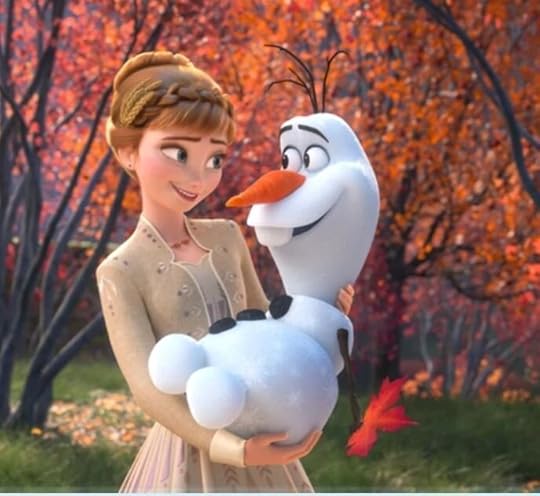
Anna and Olaf during “Some Things Never Change”
When a courtier startles her, Elsa accidentally freezes her hands to the banister. This is similar to how Elsa accidentally freezes the window sill in the “Do You Want to Build a Snowman?” sequence right before her father gives her her gloves and how she accidentally freezes the fountain when she reflexively grabs the ledge while backing away from the crowd. Ledges are just…tough for Elsa, aren’t they?
This scene also demonstrates how shy and introverted Elsa still is. Pretty much every time we see Anna, she’s interacting with lots of people, but Elsa tends more toward looking out windows and walking down halls dramatically. People still startle her easily. She’s definitely interacting with people more than she used to, but it’s not her comfort zone. This is also evident in the Charades scene, in which she looks just hideously uncomfortable at putting on a performance, even just in front of her family and closest friends.
We also see her in a purple dress in the beginning and a dark purple nightgown during “Into the Unknown.” She seems to wear a lot of colors that her mother wore when she’s trying to act in the queen role. Once her people are safe though, she changes immediately into a light blue outfit and is light blue or white for the rest of the movie - taking on her “true colors,” if you will.
The story proper starts off with essentially a harvest festival scene, set to “Some Things Never Change,” which continually demonstrates the false hope in Anna’s words by showing how things keep changing around her. This continues the trend from the first Frozen movie of playing with expectations and irony. In the first movie, for example, we hear a father talking to his son about how he can’t wait to see the princesses and bets they’re just beautiful, and then the film cuts to a shot of Anna sleeping very heavily, with extremely messed up hair and a very ladylike drool spot.
There’s a lot of ironic foreshadowing in “Some Things Never Change” but it really is mostly a stage-setting song, so I’m not going to analyze all the lyrics in depth, but we definitely have some typical “Thanksgiving” style lyrics in it. “It's time to count our blessings beneath an autumn sky. We'll always live in the kingdom of plenty that stands for the good of the many.”
And can I just say, the moment they said “And I promise you the flag of Arendelle will always fly. Our flag will always fly,” I just KNEW that flag was going down super soon. Sure enough, after “Into the Unknown,” the flag falls and the kingdom erupts in chaos, forcing its people to run away.
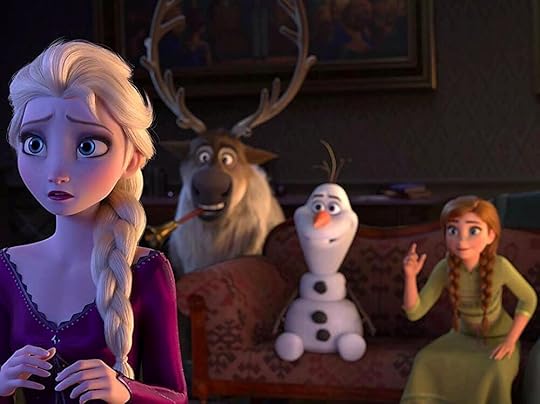
Elsa, Sven, Olaf, and Anna in Frozen II
I really love that at the end of that song, Anna is carrying her heels and walking barefoot back into the castle. I feel like every woman I know has done that at some point, but it’s not something you ever see in movies really. It’s also a fun call back to the first movie. After Anna dances with the hopping Duke of Weselton, she comes back to Elsa rubbing her feet and they have this little exchange: “Well, he was sprightly.” “Especially for a man in heels.”
Next, we get a cute Charades sequence (which seems to imply that Kristoff lives at the castle now? Although it’s a really big castle and I’m sure he and Anna have separate rooms, it still seems like the most firmly established “living together before marriage” relationship we’ve seen in a Disney movie before). This scene (which you can see here) pokes fun at many of the moments we saw in Frozen, including Elsa’s hip popping swagger at the end of “Let it Go” (she just nods “yup” when Olaf imitates her, while Anna glares at Kristoff), the villainous Hans, and the eccentric shopkeeper Hans (yoohoo!).
Elsa hears the siren call and gets upset, Kristoff tries to propose and fails miserably, then Anna follows Elsa and notes that she can tell her sister is upset because she’s wearing Chekhov’s scarf.
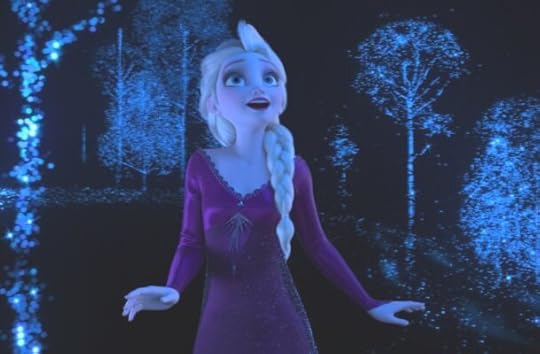
Elsa singing “Into the Unknown”
“Into the Unknown” is insanely gorgeous and another example of Idina Menzel’s inhuman singing abilities. As songwriter Kristen Anderson-Lopez said in one interview, “With Idina, if you’re given a Stradivarius, you write to a Stradivarius.” The song starts with a very “Do You Want to Build a Snowman” intro, as Elsa wanders through the castle looking at paintings on the wall, just as Anna did in the first movie during the snowman song. This is a classic “I want” song but more adult and mature than “Let It Go”; Elsa feels like she knows who she is now, someone who deeply loves her family and friends, and she doesn’t want to throw that away, but there’s something inside her that’s pulling her away “into the unknown.” She also talks wistfully in this song about wondering if “there’s someone else like me” out there; she clearly still wants a friend who can understand her magical powers and her struggles with them. And of course, at the end, we get that amazing moment where she just lets her magic out and ice diamonds appear magically in the sky all around Arendelle. These fall and wake up everyone, including the enchanted forest spirits her father talked about, and triggers the fire, water, wind, and earth to drive the citizens out of Arendelle.
Elsa actually reminds me a lot of Vanellope in “Ralph Breaks the Internet” here; she knows there’s something wrong in her life but she can’t put a finger on it. The wrap up to the movie is actually VERY Ralph/Vanellope, as the sisters end up in separate places living their destinies, but they’re still obviously very close and “holding on tight” to each other, just as Ralph and Vanellope are in their movie sequel.
Sidenote: The original is spine-chilling but the Panic at the Disco! cover of this song is also ridiculously amazing.
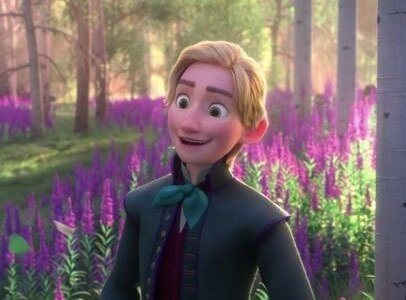
Baby Agnarr being adorable in Frozen II.
Anna has some of the best, most common sense filled quotes in the entire movie. ““Excuse me, I climbed the North Mountain, survived a frozen heart and saved you from my ex-boyfriend. So, you know, I’m coming.”
”If you don’t want me to follow you into fire, then don’t run into fire!”
The scene where they’re driving off to the Enchanted Forest and Olaf is spouting off stupid facts (most of which are…inaccurate) reminds me a lot of Shrek II when Donkey is harassing Shrek and Fiona on the ride to Far Far Away.
The Enchanted Forest reveal with the four stones in front is really beautiful (and reminiscent of the funeral stones for their parents that were shown in the first movie). Although Kristoff and Olaf just bounce off the mist (really hysterically), it just takes a touch of Elsa’s hand to part it and clear the way through. This may be because of their Northuldra heritage or may be because of her greater destiny as the “fifth” spirit intended to bridge the worlds of magic and humans (did anyone else get some MAJOR Fifth Element vibes in this movie?)
I really enjoy Olaf’s “Samantha? I don’t even know a Samantha.” then “SAMANTHA!” shouting down a mysterious hole in the earth moment.
I love that Anna recognizes Lieutenant Matthias from his portrait at the castle, framing his face with her fingers to help her place him. This calls back to her “friendship” with all the portraits and paintings there, developed during her lonely childhood when Elsa kept away from her. This was also slightly foreshadowed earlier when we saw Elsa singing to various paintings during “Into the Unknown.” The frame fingers also seems to point to the end of the movie, where Matthias is reunited with his sweetheart and showing off a photograph they took together.
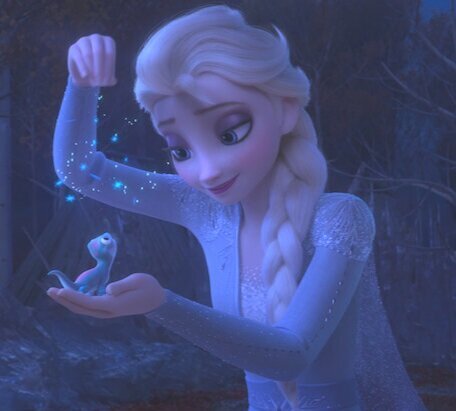
Elsa with Bruni
When Elsa somehow freezes memories in the forest (which is…never quite explained - were the memories just hanging out in the fog this whole time?), the sisters discover that their mother is Northuldra by finding Chekhov’s scarf on a young girl, who’s carrying their father to safety. There’s then a really beautiful sequence where the Northuldra sing Vuelie again and form a spiral with their arms, until the chief reaches out to the girls to ceremonially welcome them to the tribe. Later, all our heroes befriend various members of the tribe, in a lovely scene that reminds us that people in cartoon are capable of having friends outside of their immediate circle. Also, Olaf is still asking the big questions about life while the kids of the tribe decorate him with various things
So presumably their mother Iduna never told their father that she was Northuldra or that she saved him. Whyyy???? That doesn’t seem healthy for a marriage, and she probably could have helped them figure out answers for Elsa if she had ever mentioned that and told him about her background.
A lot of Elsa’s actions in the initial sequence in the forest are explained later as “calming” the spirits. She definitely manages to calm down the adorable fire salamander by befriending him, after initially blasting all the fire with lots of ice (his name is apparently Bruni, but is never mentioned in the movie). “Gale” as Olaf names her, calms down at some point after Elsa blasts her with power, but I didn’t tie those things directly together when I watched it (will have to check for it again when I watch it a second time).
Elsa does later “calm” the water by managing to ice power her way through the sea and lassoing a friggin water horse in one of the coolest sequences in the whole film. But I never did see a moment where Elsa calmed the earth? She just stayed away from the Earth giants and hid. Did I miss something there? I don’t think anyone ever “calmed” the Earth giants at all, Anna and Olaf stayed quiet to keep from waking them and then Anna woke them up to break the dam, but nothing ever seemed to actually get them to stop being destructive forces in the forest.
Kristoff’s song “Lost in the Woods” is both one of the funniest songs I’ve ever seen in any cartoon ever and also deeply moving. You just don’t really see male love interests sing about their love like this these days. All the lyrics are basically designed to punch apart toxic masculinity, in the most 80s-tastic, Queen and Whitesnake referencing way possible. Having Jonathan Groff sing Kristoff and also all the reindeer chorus voices is also a really funny answer the “Why didn’t Broadway star Jonathan Groff have a full song?” complaints about the first movie.
The scene where Anna and Elsa found their parents’ ship actually made me gasp aloud. I did not expect that. When Elsa uses her powers to see their parents at the time of their death, I just was like - nooooo whyyyyy - this is only going to upset you forever. But the sight of their ice selves holding each other as they perish is dreadfully romantic, if horrible.
However, how did they ever find out their parents’ ship even was destroyed if the ship wasn’t anywhere near where they thought it was when it went down???
I was nearly crying throughout all of “Show Yourself,” as it was so gorgeous and heart-rending. Elsa’s eagerness to find her destiny is so identifiable. It also is possibly the queerest song Disney has ever put out, as she appears to be singing a love song to a woman for 75% of it, until it’s revealed that she actually is the fifth spirit and “the voice was inside her all along.” MAJOR MOANA VIBES. But also seriously, these lyrics are really intimate and personal and almost sensual, just look at them!
And then she had strong emotions and did a wardrobe and hair change because that’s just what she does. But I love it. I love it all. I love that she gets to sing with her mother again, I love that she ends up at the center of the snowflake like in the “Let it Go” sequence where she’s building the castle, and I love that at the very end of the song, she basically becomes the siren call herself.
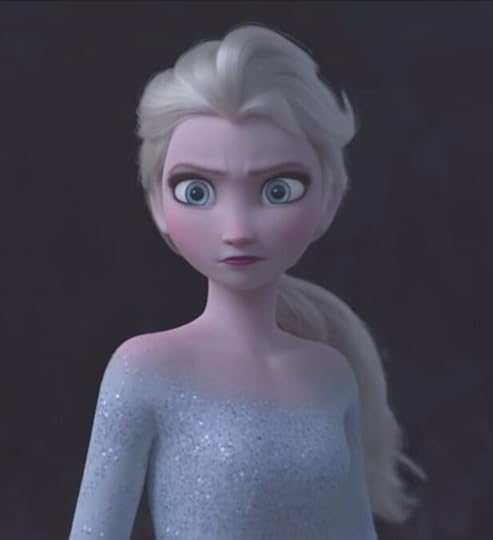
Elsa in Frozen II
Every inch of me is trembling and not from the cold
Something is familiar like a dream I can reach but not quite hold
I can sense you there like a friend I've always known
I'm arriving and it feels like I am home
I have always been a fortress, cold secrets deep inside
You have secrets too but you don't have to hide
Show yourself - I'm dying to meet you
Show yourself -It's your turn
Are you the one I've been looking for all of my life
Show yourself - I'm ready to learn
I've never felt so certain - All my life I've been torn
But I'm here for a reason - Could it be the reason I was born
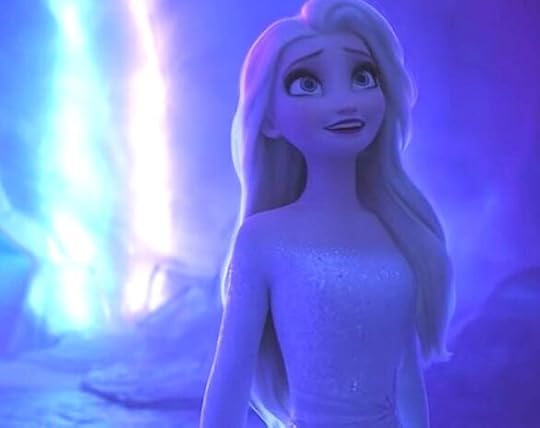
Elsa in Frozen II
I've always been so different, Normal rules did not apply
Is this the day, Are you the way, I finally find out why
Show yourself - I'm no longer trembling
Here I am - I've come so far
You are the answer I've waited for all of my life
Oh, show yourself - Let me see who you are
Come to me now; open your door
Don't make me wait one moment more
Come to me now; open your door
Don't make me wait one moment more
(Where the north wind meets the sea)
(There's a river full of memory)
Come, my darling, homeward bound
I am found
Show yourself - Step into your power
Throw yourself into something new
You are the one you've been waiting for all of your life
Show yourself - Ah, ah, ah, ah
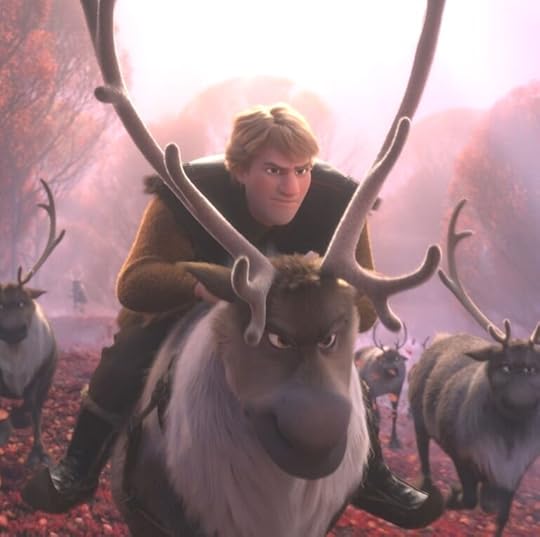
Kristoff is feminist partner, reindeer-riding goals.
How perfect is it that Ahtohallan is a glacier, a “river of ice”? I don’t know how we could have ever expected anything different. When you think of how it’s described really, it’s the only thing that makes sense.
In the memories cavern in Ahtohallan, Elsa sees her younger self singing “Let it Go” and gives a chagrined look, hand over her eyes. I think that’s really an indication of her own more mature outlook on life now rather than a flat out rejection of the themes expressed in Let It Go; her priorities are different now that she’s learned to live her life without fear by loving her family and friends. This also HAS to be a little shout-out to all the parents out there who got so ridiculously sick of the song.
Elsa also sees a scene of her mother and father interacting as young children. Her father says he’s reading a book by a Danish author (and apparently it features a picture of a mermaid on the front, although I missed seeing that at the time). This is an obvious call out to Hans Christian Andersen, who wrote The Snow Queen, which Frozen is extremely loosely based upon.
To summarize a long, multiple-part story, in very few words, a magic mirror breaks in the sky and spreads across the land, falling into the eyes and hearts of various people and making them only see bad and evil in the world. It falls into the eye of Kai, a young boy, and makes him hate his formerly close friend Gerda. The only thing that’s beautiful to him now are snowflakes. Kai ends up running away with the magic Snow Queen to her ice castle, who kisses him twice, to numb him to the cold and to make him forget Gerda and his family (a third kiss would kill him). Gerda goes on a very long journey to find Kai and goes through many Odyssey-style adventures. She eventually finds him in the Snow Queen’s domain, trapped in the middle of a frozen lake, where he is trying to form ice chips into a word; if he figures out the word, he will be freed and given a pair of skates. Gerda weeps to see Kai and embraces him; her warm tears and love remove the mirror splinter from his eye and he remembers her and loves her again. They dance, which makes the ice chips turn into the word he needs to escape from the frozen lake. And then they leave. You can read the whole Snow Queen story here.
There are lots of similarities in the stories, but obviously, Frozen is very very different. The mirror splinter in the original story gets into people’s hearts and freezes them, just like ice gets into Anna’s heart. The sudden break between close friends Gerda and Kai when the splinters get into Kai’s heart in the story resembles the sudden break between Elsa and Anna as children when Elsa accidentally hurts her sister while playing. Friendly reindeer and a snow queen living in an isolated ice palace live in both. Gerda goes on a journey to rescue her friend Kai when he disappears, just like Anna journeys to rescue Elsa. Her love rescues Kai, just as Anna’s love rescues Elsa.
Okay, so Olaf’s disintegration obviously has to be a reference to the “snap” in Avengers: Infinity War, right? There’s no way that wasn’t purposeful.
It’s incredibly heart-breaking to see such a positive character as Anna reach her lowest point, after she believes both her sister and her friend Olaf are dead. The song “The Next Right Thing” addresses suicide and depression more straightforwardly than any other kid’s movie I’ve ever seen; it’s truly impressive, particularly since Kristen Bell (who voices Anna), has been very open about her own struggles with depression and anxiety.
The reparations plot line in this movie, in which Anna determines that the dam her grandfather built to trick the Northuldra must be destroyed to free the enchanted forest, even if it means the destruction of her own kingdom, is really deep and dark and I’m honestly wondering how many kids in the theater actually understood the ramifications of it. It’s a deeply radical idea in many ways.
To be fair though, it had already been established that Elsa, Anna, and Co. couldn’t leave the forest either, so this was also their only way of going home, and Anna was sure that her people were out of the kingdom and safe (as one of the last orders Elsa gave before they left on their journey was “don’t let them go back into Arendelle.” Who did she order to do that, by the way? Was it Oaken? It felt familiar but now I can’t recall).
Kristoff is feminist goals. He runs up to save Anna from the earth giants and immediately says “I’m here, how can I help?” instead of trying to stop her or take over the situation. When she later apologizes for leaving him to follow and try to protect Elsa, he simply says, “It’s okay, my love is not fragile.” I already REALLY loved Kristoff for breaking the Disney “prince” mold by being tall, broad-shouldered, and scruffy, with a big nose, but he is just such a genuinely good person that I can only love him even more now.
The ending where he, Olaf, and Sven dress up for Anna’s coronation and he says “You get this for one hour” before Anna ruffles his hair and says “I prefer you in leather anyway” both illustrates how perfect they are together as a couple and also is possibly the most sexual double entendre ever in a Disney movie.
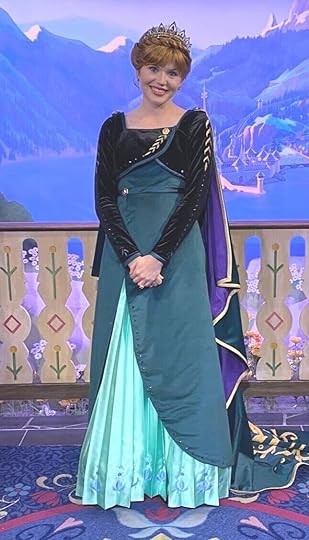
Anna’s new Frozen II outfit at Disney World.
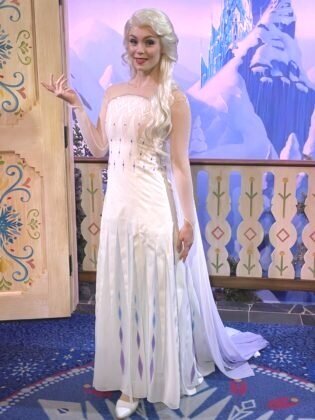
Elsa’s new Frozen II outfit at Disney World.
At the end of the movie, Matthias reunites with his sweetheart and they show off a photograph they’ve taken together, which Matthias specifically says he didn’t know about before he was trapped in the enchanted forest. I felt this insertion of such an obviously modern invention takes the viewer out of the fairy tale atmosphere a bit, but it does help date the movie. The earliest photographs came out in the late 1830s, so I’m guessing the events of Frozen are around the 1840s or so. This is supported by sandwiches being mentioned in the first movie, as sandwiches weren’t really around under that name until the 1760s or so and they didn’t gain popularity outside of pubs and taverns until the 1800s.
In addition, we know Arendelle is probably in Norway or Scandinavia somewhere, not just because of all the cultural references evident in the movies, but because in “Olaf’s Frozen Adventure,” a woman literally mentions that she makes a giant cookie map of Norway every year for Christmas. That definitely seems like something you would only do if you actually lived in the country somewhere.
There’s so much symmetry between the movie. Frozen II’s starting structure is EXTREMELY similar to Frozen. First, we get an intro flashback with the main characters as kids with their parents and some sort of heavily foreshadowing song (Frozen Heart in the first, All is Found in the second), then a stage-setting song where a lot of characters sing as they set up/celebrate some big event (For the First Time in Forever, Some Things Never Change), then some accident happens with Elsa that instigates trouble or danger for the people in Arendelle (she freezes the kingdom accidentally, she accidentally awakens the enchanted forest spirits which chase all the people out of the kingdom), then our main characters start out on a journey to solve the problem.
Frozen’s main plot really gets underway when Elsa freezes Arendelle accidentally out of fear; Frozen II’s main plot ends with Elsa saving Arendelle with her ice powers out of love. Elsa believes Anna is dead towards the end of Frozen and Anna believes Elsa is dead towards the end of Frozen II; both of them are completely crushed by the loss of their sister.
The post-credits scene in Frozen II features Olaf telling the story of the movie in his ridiculous abbreviated style to Marshmallow (the giant snowman from Frozen) and all the tiny snowball creatures from Frozen Fever (which for SOME REASON is not on Disney+, what the heck).
Apparently the day Frozen II came out, the characters of Elsa and Anna at Disneyworld were immediately changed into their movie-ending outfits, Elsa’s snow queen dress and Anna’s queen garb. Seems a little silly to do it that quickly, as it probably spoiled people on vacation who hadn’t seen the films yet, but - at least the outfits are pretty?
Stray Thoughts: Frozen has some deliberately obscure references in it. I had forgotten how many Arrested Development references are in it! And I just noticed a new cultural reference I hadn’t picked up on before! While watching it over again today to help with this post, I noticed a specific exchange in which villagers in Arendelle argue over whether firewood should be stacked with the barn side up or down. I googled this, and apparently it’s a reference to a big debate in Norway from earlier in 2013 (frozen came out in November 2013) on this very topic. You can read all about it here!
Fun fact: Frozen II is the first official sequel to a Disney Princess movie and only the third official sequel in the Disney canon (after The Rescuers Down Under and Ralph Breaks the Internet). The many direct-to-video sequels of the 90s and early 2000s apparently were made by a slightly different arm of Disney that isn’t operating or recognized today. You could read ALL about it here.
November 27, 2019
Overanalyzing the Crown: S3E6 "Tywysog Cymru"
This post is part of a series on Season 3 of The Crown. All my posts are available here .
Prince Charles learns Welsh from a Welsh nationalist and becomes a Wale himself when he’s invested as Prince of Wales. (Clearly, my summaries of these episodes are not going to be very in-depth or serious, as I’m assuming you’ve watched the episode already if you’re reading my post overanalyzing it. :D )
The name of the episode translates to “Leader of Wales” in Welsh, or in this context, “Prince of Wales.” This ties back into the entire Prince Charles in Wales plot line and particularly, his discussion with Professor Milward about Llywelyn ap Gruffudd, the last Welsh Prince of Wales, who was killed in battle by Edward I in 1282. Edward’s son (also Edward because, English royals have no creativity when it comes to naming) , was invested as the first English Prince of Wales in 1301.
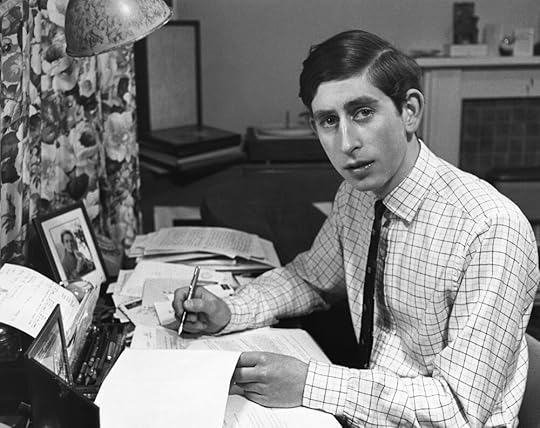
Prince Charles
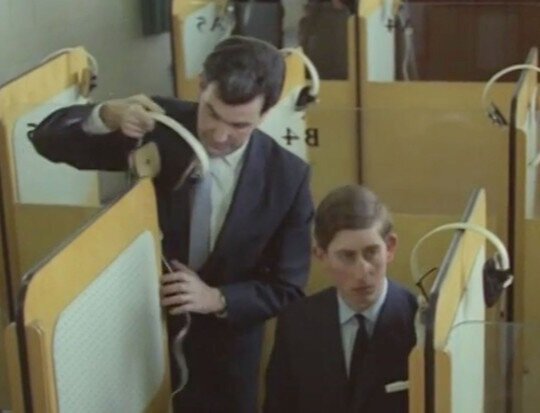
Professor Edward Millward and Prince Charles
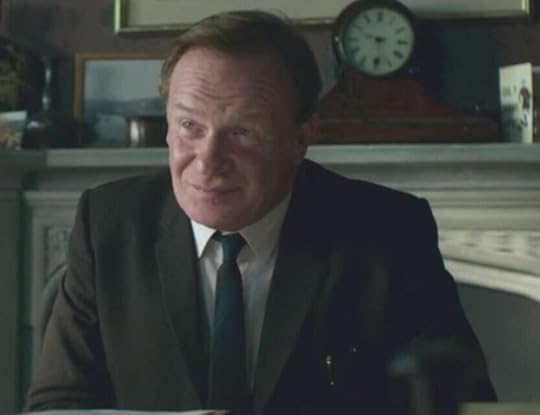
Mark Lewis Jones as Professor Edward Millward in The Crown
The episode starts off with the Cabinet meeting in which the investiture of the Prince of Wales is discussed. The previous investiture in 1911 was of the eventual Edward VII. We know him as David, Duke of Windsor, who abdicated within a year of becoming King in order to marry Wallis Simpson. He was invested at age 17; Charles was not invested until he was 20.
In case you were wondering, a formal investiture ceremony is not necessary to become the Prince of Wales; the actual title is conveyed via letters patent. It is not a hereditary title, so the sovereign does have to create and bestow the title on his/her eldest living son (When Elizabeth became Queen in 1952, the then-3-years-old Charles automatically became the Duke of Cornwall).
Edward/David was made Prince of Wales on his 16th birthday, over a year before the formal investiture; Charles was actually declared Prince of Wales when he turned 9. The 1911 one was made public for political reasons; the Prime Minister at the time, David Lloyd George, thought that the event would calm down the growing swell of Welsh Nationalism and increase his own popularity. Apparently previous investitures were quite a bit more private and less ceremonial. As was mentioned in the episode in the Cabinet meeting, the 1911 investiture included a deployment of 15,000 troops, a Devonshire-class cruiser, 21 gun salutes, a battery of Royal Field Artillery, a landing party supplied by the blue jackets and the royal marines, two squadrons of cavalry of the line. During this meeting, Wilson is flanked on either side by female members of his cabinet in Orange and Green; when he’s talking to the Queen about the investiture, she herself is wearing green. You’ll see a LOT of green and pinks/oranges in this episode, which seems to signal “Wales” without coming off too Christmassy.
Sidenote that I just love: at the 1911 investiture, Queen Mary wore several pieces given to her by a group of women who were all named “Mary.”
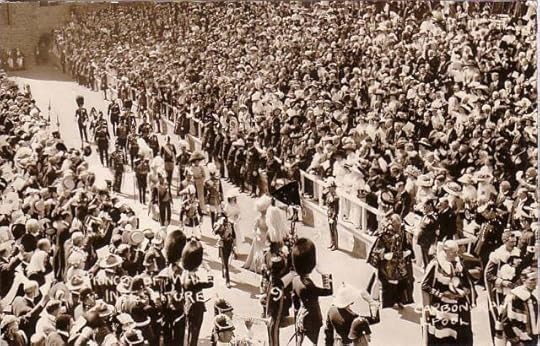
Prince Edward (David)’s 1911 investiture as Prince of Wales
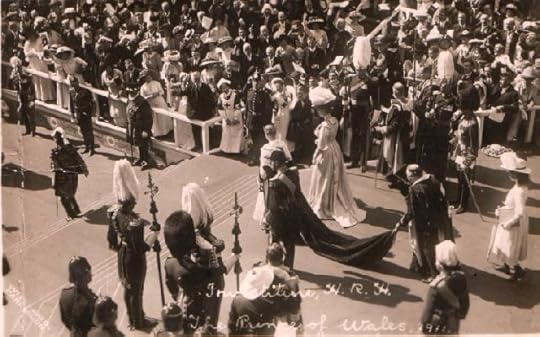
Prince Edward (David)’s investiture as Prince of Wales
Additional Note: Elizabeth was never given the title “Princess of Wales.” At the time, the line of succession was determined by male preference primogeniture, so she became “the heiress presumptive” when her father became King. If her father had had a legitimate son, that son would have taken precedence, and would have been the “heir apparent”; thus, named the “Prince of Wales.”
“Princess of Wales” has only been used to refer to the Prince of Wales’ wife in the past (Though Prince Charles’ wife Diana went by the Princess of Wales, his second wife Camilla uses the title “Duchess of Cornwall” instead, due to the title’s strong association with Diana). Technically though, “Princess FIRSTNAME” is only the correct title to use when the Princess of Wales is a princess in her own right, e.g., she herself is the daughter of a sovereign of another country (so neither “Princess Diana” or “Princess Kate” are correct).
It’s a bit unclear whether that tradition will continue now that male preference primogeniture has been abolished in the UK (the Succession to the Crown Act 2013 replace this system with absolute primogeniture, making it so the eldest child of the sovereign is always the heir to the throne, regardless of sex. This act also removed the requirement to get the sovereign’s permission to marry and changed the rules so that royals marrying Roman Catholics can still remain in the line of succession).
Fun Fact: A whole new set of Welsh honours (coronet, rod, ring, sword, and a robe with doublet and sash) were made for Prince Edward in 1911. The rod, ring, and sword all feature the Welsh dragon. The rod, ring, and sword were reused for Prince Charles’s investiture in 1969, but a new coronet had to be made, as Edward/David had actually illegally taken his coronet with him when he went into exile. After his death, it was retrieved and taken back to the UK. This coronet is now part of the Crown Jewels, along with the 1728 coronet of Frederick, the eldest son of George II. Charles’s own coronet is part of the honours of Wales.
This article from Town & Country talks a lot more about all the design of Charles’s coronet and is super interesting.
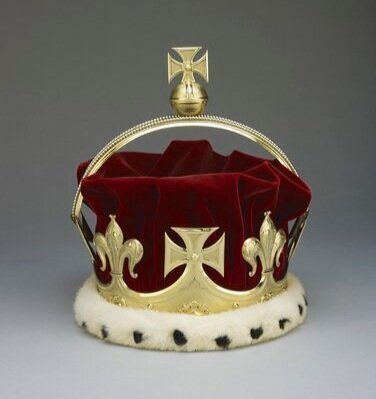
Prince Edward/David’s Coronet
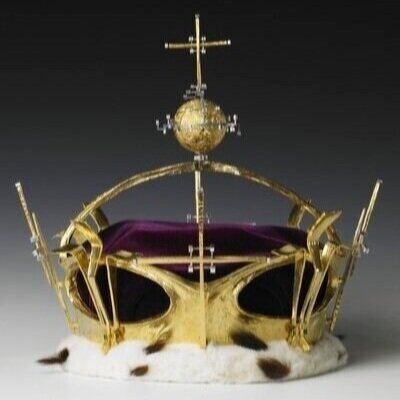
Prince Charles’ Coronet
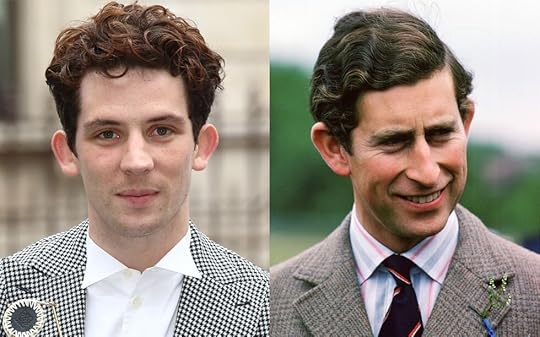
Josh O’Connor vs. Prince Charles. MATCHING EARS.
When the Queen gathers the family to tell Prince Charles that he has to go to study in Wales, the Queen is wearing green and Anne is wearing red, the colors of the Welsh flag, while everyone else is in blues and blacks. It’s a little hard to see, but Charles is actually wearing a green and orange tie and a matching pocket square.
I know that dramatically it makes sense to have the entire family on one side and then poor Charles alone on the opposite, as it makes him look very alone as he’s feeling upset about being sent off away from everyone, but in real life, it’s a bit odd and impractical. This set up also seems to evoke a vague military feel, possibly referring to the “feudal invasion” of military members participating in the previous investiture of the prince of Wales that Prime Minister Wilson joked about earlier.
This actor (Josh O’Connor) doesn’t look much like Charles from the front, but from the back, they’re really similar. It’s the ears!
The prince’s safety in Wales is never discussed in the episode (although we do see his ever-present body guards), but historically, there were actual threats made against his life. Two members of a small secret group called Mudiad Amddiffyn Cymru (The Movement for the Defence of Wales) were actually killed in Abergele when the bomb they were carrying to a railway line (along which the royal train would run) exploded. A few days later, a bomb left in the town exploded and hurt a young boy.
I learned while researching this episode that many supporters of Plaid Cymru actually backed the monarchy; they wanted Wales to become a dominion, like Canada or Australia. If this happened the Queen would still be the head of state. It was the younger branch of Plaid Cymru that was really anti-monarchy and against the investiture. This anti-monarchy branch was highly motivated by the destruction of Capel Celyn, one of the last Welsh-only speaking communities, which was flooded to build a reservoir to provide water to Liverpool (which is discussed later in the episode).
The tiny little facial expressions of Milward and the students around them when Charles first attempts to pronounce Welsh and mangles it terribly tell just so much about their feelings toward Charles, the English, and their presence in Wales.
Later, Millward righteously reams out Charles for his indifference to Welsh culture and the meaning of his role to both Wales and the university. Though this is probably deserved, Milward’s barb about how previous Prince of Wales never visited is actually misplaced when you look at the historical evidence. King George V was actually considered a very good prince of Wales while he held the title, and had taken a personal interest in Wales. In addition, Edward/David was a hugely popular Prince of Wales who definitely did visit. He served with distinction in World War One and, during the Depression years, toured the badly hit parts of Britain and the Welsh mining valleys in particular.
When Charles comes in to show Milward that he’s been to the library and learned about Llywelyn ap Gruffudd, there’s a family tree on the chalkboard behind him that of Llewellyn’s actual family, indicating that Milward really did plan to teach him about it that day. In that embarrassing staff dinner scene, Millward had joked to everyone “we’ll go over that this week.”
Poor Charles. His line “It’s alright, I’m incredibly used to it.” about being alone and having no friends makes me so sad.
I hadn’t realized that Mrs. Milward is literally on the phone with someone talking about how she can’t understand how her husband can even stand to be in the same room with Charles while Charles is bringing groceries in. It’s sweet how he actually is carrying the groceries in and tries to help.
Milward is wearing light green at his house, is often lit with green light, and there are often paintings or decorations around him that are green, green folders. This is a WELSH man! His pregnant wife is also wearing a pink, white and green dress (with some orange too), like a pale version of the Welsh flag. Later that night, she literally wears a pink, white, and green nightgown.
The scene where Elizabeth and Philip reminisce over the time their parents kept them apart for four months to try to get her to stop loving him is so cute (although I hate that Philip says his son shouldn’t be trusted with editing his own speech and Elizabeth just goes along with it). They seem like such a happy, healthy couple this season. This conversation will be echoed a few episodes later when Camilla Shand comes into the picture and other members of Charles’ family come up with a similar plot to separate the two.
They don’t emphasize Charles’ security team as much as they did in the S2E9 episode Paterfamilias, probably because he’s 20 now and not a child, but they are always around, just around the corner. It’s subtle, but you do see a quick glimpse of his security team going through people’s bags and such right before the ceremony.
The filming style of this episode really emphasize the green hills of Wales as the royal train goes through the countryside. Although the Queen, Queen Mother, and Princess Margaret all wear clothes that are almost exactly what they wore in real life, they are indeed in pink, cream, and green, which echo the Welsh flag. Anne is in blue, which also is historically accurate, but seems also to indicate her close ties to Charles. All of these hats are accurate (and some of them are just ridiculous). The queen’s hat kind of makes her look like a pearl beaded volleyball.
Sidenote: Helena Bonham Carter, who plays Princess Margaret in Season 3, is 6 inches shorter than Vanessa Kirby, who played Princess Margaret in Season 1 and 2. However, Bonham Carter is significantly closer to Princess Margaret’s actual height; Margaret was 5’2”. Queen Elizabeth herself is 5’4”; Claire Foy (who played her in season 1 and 2) is 5’4” and Olivia Colman (who plays her in Season 3) is 5’7”.
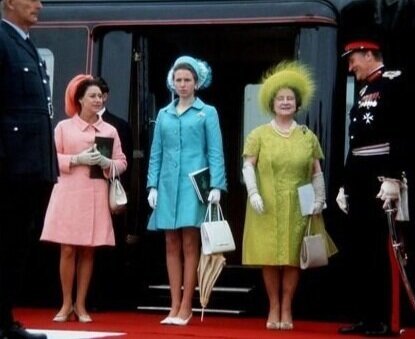
Princess Margaret, Princess Anne, and the Queen Mother Elizabeth at Prince Charles’s investiture as Prince of Wales
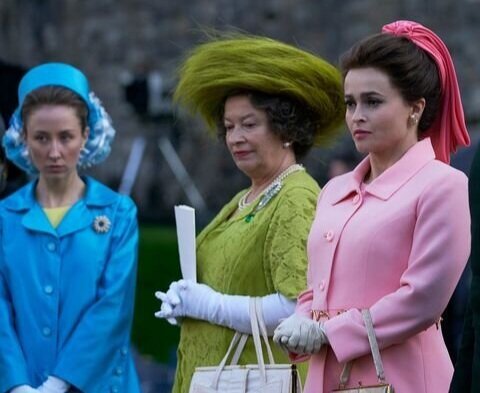
Erin Doherty as Princess Anne, Marion Bailey as the Queen Mother, and Helena Bonham Carter as Princess Margaret
Prince Charles always seems to be wearing blue or grey (maybe because he’s sad?). I’m happy that this season shows Charles’s continued close connection with his great-uncle, Lord Mountbatten; I loved seeing Dickie advocate for Charles in the S2 episode Paterfamilias.
Millward wears a blue paisley tie when watching Charles’ investiture in the pub, matching Charles’s standard color scheme. I think this symbolizes their connection and friendship. He’s surrounded by lots of friends wearing various shades of green and red. Mrs. Milward and her son are in blue, plus green, showing their connection to both Charles and Welsh pride.
Milward looks SO PROUD when Charles pronounces atmosphere correctly-ish in Welsh.
There are several interesting things about Charles’ investiture that aren’t mentioned in the episode. The actual ceremony of the investiture sounds very old, but was in fact only created for the 1911 occasion. Lord Snowdon (Tony Armstrong-Jones, Princess Margaret’s husband), who himself was Welsh, designed the event and the simple slate dais for the ceremony.
A lot of the insignia used in the investiture is really symbolic and you could go down a very deep rabbit hole in learning about it all. The College of Arms has some great photographs and scans of programs explaining the meaning of all the insignia here, if you’d like to learn more.
You can actually watch some of the 1911 ceremony on YouTube here: https://www.youtube.com/watch?v=J31P5ES45fw . Prince Charles’s 1969 investiture is on YouTube in full at https://www.youtube.com/watch?v=D7zaLuA_DGI.
It is really wonderful that Charles actually went on a tour around Wales to meet people after his investiture. It was a really successful tour and BBC actually has a lot of footage of it up on their website.
Prime Minister Harold Wilson’s Labour government also built an entire year-long campaign called Croeso 69 (Welcome ‘69). They wanted to use it to show a modern Wales, promote tourism, and demonstrate British interest while Welsh nationalism was on the rise.
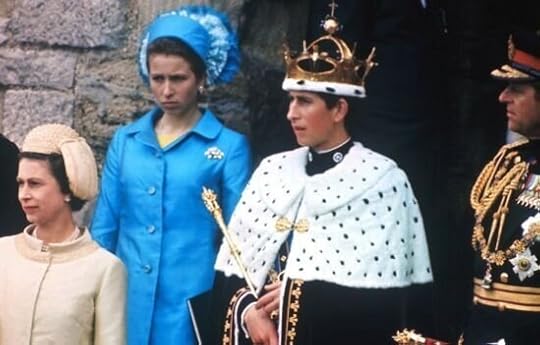
Queen Elizabeth, Princess Anne, and Prince Charles at Charles’ Investiture as Prince of Wales.
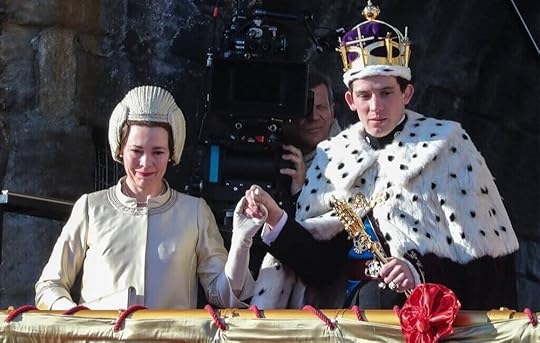
Olivia Colman as Queen Elizabeth II and Josh O’Connor as Prince Charles
The last scene between the Queen and Prince Charles, as she’s getting ready for bed, is shot to indicate the great distance between the queen and her son while they’re talking. She is barely repressing her fury at her son for changing up his speech.
The queen refers to her grandmother telling her that doing nothing is the hardest thing to do of all. We saw that conversation in S1E4 episode Act of God, when Queen Elizabeth goes to Queen Mary for advice about whether she should talk to Winston Churchill during the Great Smog.
We see how angry the queen is with her son in this scene, but we also saw how protective she was of him earlier, both when she advocated him for staying at Cambridge to Wilson and when she suggested he be allowed to make changes to his speech (which he ends up doing on his own). She also is wearing blue in this scene, signifying her sympathies with her son, even when they’re disagreeing most stridently with each other. Charles himself is wearing the same green and orange tie and pocket square that he wore when he was told he was going to Wales, although his suit appears to have more of a greenish tinge now. There’s a subtle checked square pattern (with each square containing a circle) in both his tie and his mother’s robe, further illustrating their bond as sovereign and heir.
“I have a voice.” “Let me let you into a secret. No one wants to hear it.” “Are you talking about you or the country?” “No one.” This is one of the saddest moments ever to happen in The Crown.
If you want to learn more about the Queen and Prince Philip’s approach to parenting, this article gets into it a bit.
If we’re going off of Prince Philip’s earlier observation from S3E2 Margaretology about how the royal family tends to have a lot of dull people and sparkling people (Lillibets and Margarets), Charles seems to be a bit more the Margaret of this generation and Anne seems to be a bit more the Lillibet, resigned to her place and willing to do her duty (despite how similar her personality is to her father’s).
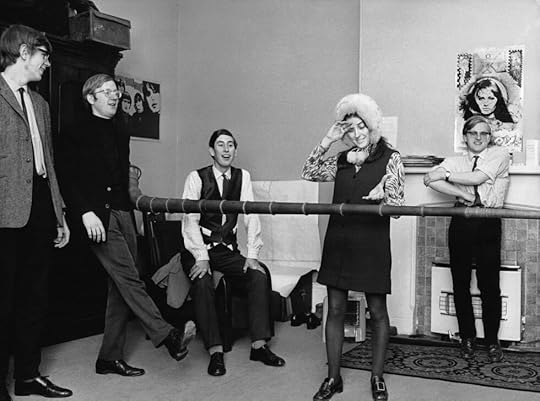
Prince Charles with the Dryden Society at Cambridge
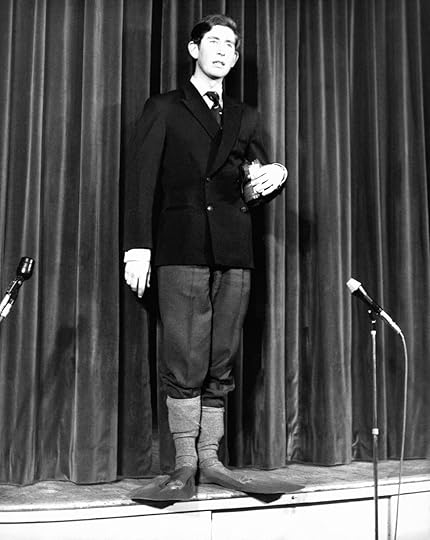
Prince Charles with the Dryden Society at Cambridge
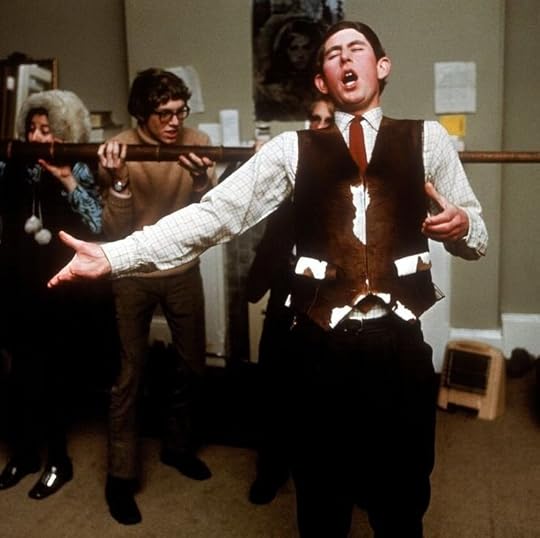
Prince Charles with the Dryden Society
Though Charles did perform with a drama society while at Cambridge, it looks like they did more comedic sketches rather than Shakespearean drama. Some of the photographs of him rehearsing with the Dryden Society (as it was called) are just hilarious.
At the very end of the episode, Charles performs the hollow crown speech from Shakespeare’s play Richard II. Both Charles and Richard II were given the title Prince of Wales at age 9, the former in 1958 and the latter in 1376. The text is specifically from Richard II Act 3, Scene II, when Richard has pretty much reached his lowest point. Most of his supporters are dead and he feels terribly alone and very vulnerable. It is a good echo for Prince Charles’s own feelings of despair about his role as heir to the throne and a dramatic, if terribly sad, way to end the episode.
For within the hollow crown
That rounds the mortal temples of a king
Keeps Death his court and there the antic sits,
Scoffing his state and grinning at his pomp,
Allowing him a breath, a little scene,
To monarchize, be fear'd and kill with looks,
Infusing him with self and vain conceit,
As if this flesh which walls about our life,
Were brass impregnable, and humour'd thus
Comes at the last and with a little pin
Bores through his castle wall, and farewell king!
Cover your heads and mock not flesh and blood
With solemn reverence: throw away respect,
Tradition, form and ceremonious duty,
For you have but mistook me all this while:
I live with bread like you, feel want,
Taste grief, need friends: subjected thus,
How can you say to me, I am a king?
November 26, 2019
That Poem in Man in the High Castle
Specifically, Season 4, Episode 3. The character Bell Mallory beautifully recites this before the Black Communist Rebellion sets off on a mission. It’s absolutely gorgeous and I immediately went off to find it.
I really love Man in the High Castle and May write about it in the future, perhaps after I’m done with my work on The Crown!
If We Must Die
BY CLAUDE MCKAY
If we must die, let it not be like hogs
Hunted and penned in an inglorious spot,
While round us bark the mad and hungry dogs,
Making their mock at our accursèd lot.
If we must die, O let us nobly die, So that our precious blood may not be shed
In vain; then even the monsters we defy
Shall be constrained to honor us though dead!
O kinsmen! we must meet the common foe!
Though far outnumbered let us show us brave,
And for their thousand blows deal one death-blow!
What though before us lies the open grave?
Like men we’ll face the murderous, cowardly pack,
Pressed to the wall, dying, but fighting back!
November 23, 2019
Overanalyzing The Crown: S3 E5 “Coup”
Prime Minister Harold Wilson is unpopular due to all the economic troubles in England, so, pushed by his Cabinet, he fires Lord Mountbatten in an effort to improve things, who then joins an attempt to launch a coup of the government. Queen Elizabeth takes a break from it all to go hang out with horses in France and Kentucky (good for her!).
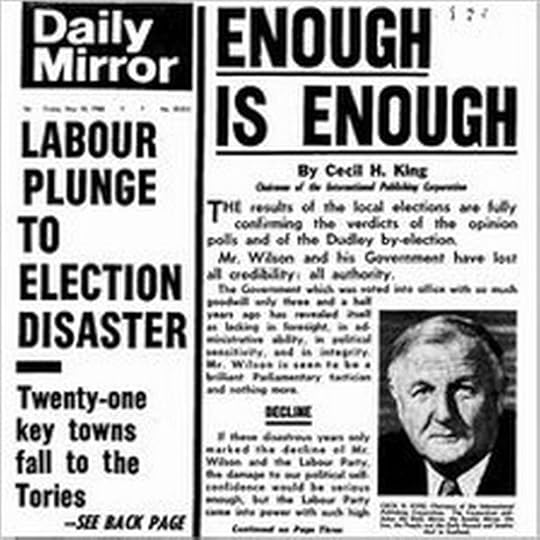
So that front page of the newspaper shown in the show totally happened, y’all. Here’s the actual one.
There’s a really intense music at the beginning of this episode (that vaguely reminds me of the “previously on Battlestar Galactica” music? If you’ve watched it, you’ll know what i mean) as we follow Cecil King from the street into the newsroom, where he crosses out the headline and makes it harsher. This is the second episode in a row where the episode starts by following a minor character’s walk from a vehicle into a building to spew harsh truths; in “Bubbikins,” the episode started off with Princess Alice’s accountant getting out of a motorcycle sidecar and walking into the convent to talk to her. I think they’re both even wearing tan jackets. How odd.
It’s ironic that Cecil King’s own harsh coverage of Labour government is what pushes the Cabinet to urge Wilson to fire Lord Mountbatten from his job as Chief of the Defence Staff. Cecil LOVES Lord Mountbatten and thinks his firing is the worst. They emphasize both in the newsroom and in the cabinet that the Mirror is a Labour-supporting newspaper, and yet they’re STILL criticizing the government really harshly. And then King starts to launch a coup (because his name was just foreshadowing I guess???).
Can I just say that I love that this show kept everyone’s names, no matter how many of them there were? In this episode, we have a Cecil King and a Cecil who serves as Elizabeth’s racing manager (his surname wasn’t given in the episode but IMDB says it’s Boyd-Rochfort). In the second season, we saw Cecile Beaton the royal photographer (he was in the first season too, i think, but I don’t know if we ever got his name).
It may seem like a small thing for which to applaud them, but OTHER English “period” dramas haven’t done that. The Tudors notoriously erased one of Henry VIII’s sisters, changed the other one’s name from Mary to Margaret to avoid confusion with Henry’s daughter Mary, and then married her off to the king of Portugal (it was FRANCE, y’all. /sigh/).
I marathoned season 1 and 2 of the Crown recently, so I enjoy seeing the ways in which the cabinet meetings change over time. This Labour cabinet seems a little more combative then the previous Prime Ministers’, plus I think this is the first one we’ve seen women sit in? Even if there were women in the previous seasons’ cabinets, they definitely weren’t as outspoken or comfortable in the room as the ones we see in Harold Wilson’s cabinet. They’re both pretty fabulous. We’ve got Wilson’s private secretary, Marcia Williams/Falkender (played by Sinead Matthew), who previously yelled “Grow some balls!” at Wilson in the Aberfan episode. We also have Barbara Castle ( played by Lorraine Ashbourne), who served many different roles under Wilson, including as the first-ever Minister for Overseas Development, Minister of Transport, Secretary of State for Employment and Secretary of State for Social Services.
In this scene, Wilson is back to his pipe in front of a single green lantern that’s lit in the dark, while all the others are off. The women in the meeting wear green. This seems to point to the money focus of the current meeting and crisis. Conveniently, as they talk about how pompous and proud Lord Mountbatten is, we see a scene of him wearing the grandest military uniform ever, in front of a huge number of soldiers. Wilson fights against the suggestion of firing him very briefly, but not too hard, not like when he fought against blaming the queen for Aberfan.
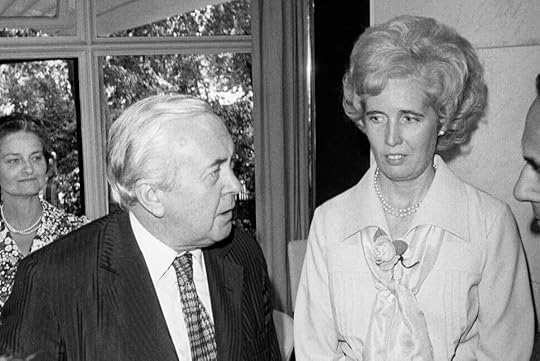
Harold Wilson with Marcia Williams/Falkender
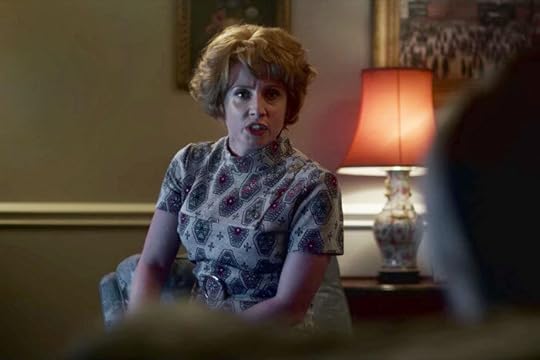
Marcia Williams/Falkender (played by Sinead Matthew)
Wilson kicks him out while sitting in the cabinet room at the gigantic table; they both look very tiny in that large space at that large table. I’ve noticed that Mountbatten basically wears the colors of the Union Jack in every shot in this episode—a blue tie when Wilson fires him and a red, white, and blue tie when his office is being cleaned out.
Mountbatten sits in his office forlornly as people clean out his office around him and receives a very sad cake with the haphazardly written “Farewell” on it. A bunch of soldiers serenade him with “Auld Lang Syne” as he leaves. HIS PAINTING is literally is being carried out right behind him; that’s a beautiful and dramatic shot, as all the singing military men look down to watch him pass. I’m not positive, but I think the painting is actually of Lord Mountbatten in real life rather than Charles Dance?
Sidenote: The Aberfan villagers have these soldiers beat when it comes to three-part harmony.
That dog is looking up at Mountbatten’s son very intently while waiting for Mountbatten to drive home. Mountbatten also has statues of all his dogs? Huh. The guy really likes his dogs I guess. Also, if I ever get fired in the future, I definitely want to recover from it by dramatically bathing in a gorgeous tub while petting a dog and drinking liquor from a crystal decanter.
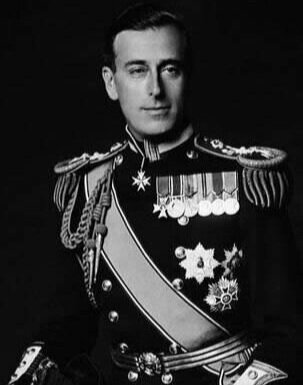
Lord Mountbatten
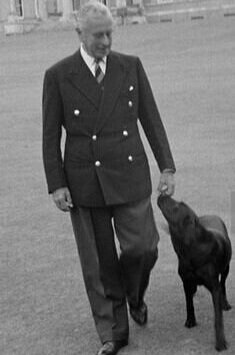
Lord Mountbatten with his dog Kimberley
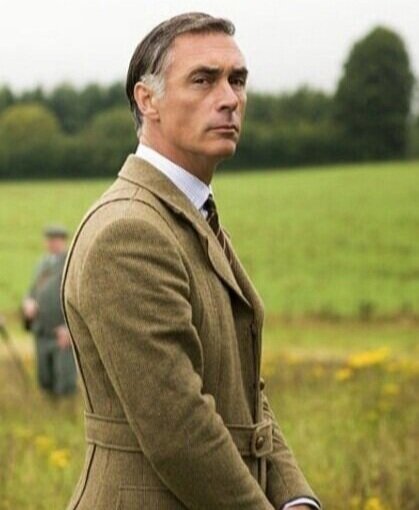
Lord Mountbatten in The Crown Season 1 ?, portrayed by Greg Wise
We next see the Queen on the train, wearing a business-like white floral dress and hat and signing various acts. When Michael Deane says “Pens down, your majesty, ten minutes to Newmarket,” she instantly smiles and looks so much lighter and brighter. She then changes into the clothes she’d wear all the time if she could, more sensible clothing, in blues and a plaid skirt. There’s a very lovely small moment where she picks a hair off the clothes of the woman dressing her, indicating their close, friendly relationship, even if we haven’t actually met this woman in the story itself.
At the ascot races, with Porchie, the Queen is in a ridiculously pink and grey floral dress with a very loud matching hat, while her mom is in a similar purple and white floral. Porchie and Dickie are both in the traditional ascot race men’s uniform, top hats and tails. Mountbatten calls her father’s horse training methods obsolete, quite obviously talking about himself and how he was fired. The Queen notably looks over at Queen mother as Porchie mentions she can deputize people to serve in her absence.

Lord Mountbatten

Charles Dance as Lord Mountbatten
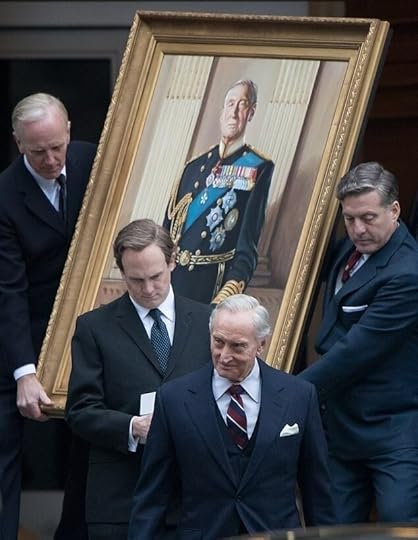
Charles Dance as Lord Mountbatten
When the Queen meets with Wilson, she is noticeably distracted by a large painting of her horse (this seems to tie back to the previous episode, in which a shot at the end showed that her office was positively full of horse paintings). When Wilson says he has to devalue the pound and feels totally humiliated by it all, the queen barely reacts and is just like, eh, that sucks, I’m off to France to hang with horses now.
Cecil King is in a black pin striped jacket, red tie, and has a gold clock on a chain. His outfit is the first indication we’ve really seen that he’s actually a rich banker. He quotes Hamlet, saying “there is special Providence in a fall. If it be now, ’tis not to come. If it be not to come, it will be now. If it be not now, yet it will come—the readiness is all.”
Cecil’s mention of Mountbatten’s war hero credentials brings something to mind; it wasn’t mentioned very much in the first two seasons, but it’s a good reminder that pretty much all the adults older than 30 at this point in the show lived through World War II, and a good portion of them are also war heroes.
As Wilson explains devaluing on tv, all the cabinet wears red, red ties and red dresses, continuing the apparent “Union Jack” costuming with all the people involved in the government and coup plot. Perhaps this indicate that all of them really are trying to act in the country’s best interest?
This continues at the Bank of England coup meeting with Mountbatten in a blue tie and Cecil King in a red tie.
Then we watch a dramatic montage of Mountbatten researching coups, history and law, while wearing red white and blue tie. I gotta say, if you’re going to launch a coup, researching what’s worked in the past and what hasn’t is pretty smart. The shot of the cars approaching mountbatten’s house all at once is almost military invasion-like.
As talks about ways to do a coup, we see b-roll of the Queen looking very happy while doing horse things and wearing various tans and light green outfits and scarfs (pink, light blue, brown). Basically, throughout her horse holiday, she’s wearing very non-Union Jack colors because she’s on holiday and trying not to think about being Queen right now, thank you very much. She and Porchie also seem to match at times, indicating their friendship. Porchie does look at her a little too long at one point, bringing back the Season 1 plotline about how he’s secretly in love with her.
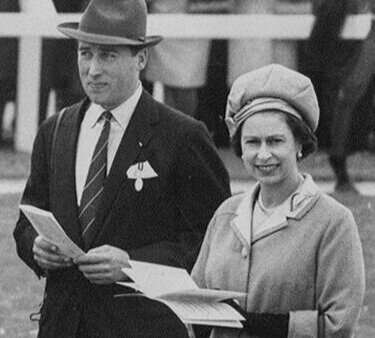
“Porchie” and the Queen
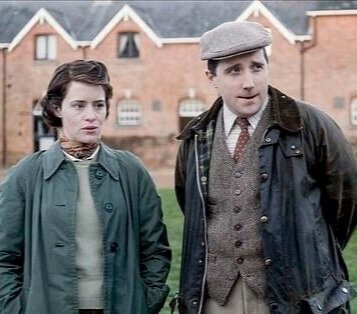
The Queen (Claire Foy) and “Porchie” (Joseph Kloska)
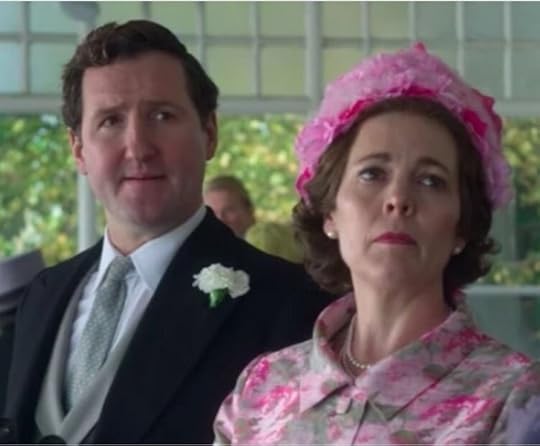
“Porchie” (John Hollingworth) and the Queen (Olivia Colman)
The conversation in which the Queen says that “this,” namely, being involved with horses, was what she was really meant to do full time, not being Queen. There’s so much sadness and regret in her voice as she talks about how she only is in this position because her uncle didn’t do his own job.
Wilson is again wearing a red tie when he calls the Queen and tells her about the coup and Mountbatten’s involvement in it. As she walks back up the stairs afterwards, she looks terribly defeated, but tightens her lips and gets down to the business of being Queen again, the job she never wanted and the job she can never leave.
When the Queen meets with Mountbatten, she’s wearing a somber brown skirt suit and starts out the conversation facing away from him at her desk, quite clearly curious. Mountbatten, in a blue and red tie, quickly realizes that she knows exactly what he’s been plotting.
I love her fierce response to his “how can you protect Wilson?” “I am protecting the prime minister. I am protecting the constitution. I am protecting democracy.” She may not like being Queen, but she clearly has grown into her role and is very good at it. She knows what she’s doing now and understands that her role as head of the family is to stop this madness immediately, before Mountbatten’s actions result in the entire royal family being …de-royaled? What would the term be here, I wonder?
She also is very specifically posed at center of the screen looking straight out at Mountbatten, full of righteous anger. He took her away from the things she loved and brought her back to reality in the most unthinkable way possible. She icily reminds him that there are other things he could be doing right now, such as looking in on his sister.
Mountbatten then does have a really lovely and sweet scene with his sister, who apparently now is bedridden. They laugh over how little children now lecture them.
This is such an interesting episode. During Seasons 1 and 2, Lord Mountbatten or “Uncle Dickie” as we’ve heard him called, was always presented as an essentially likeable and good character. Not perfect (he exchanged some nasty barbs with his wife, if I recall), but good. He comforted the young Philip at his sister’s funeral and served as a father figure for him, he gently communicated some concerns from the Conservative party about Winston Churchill to Elizabeth in a way that didn’t seem pushy, he was a confidant to Prince Charles and advocated for the boy when he was being bullied. Yet, the first time we see him in Season 3, he’s introduced in a commander role we’ve never seen him in and described as a pompous man. He’s played by an actor notorious for playing villainous roles. And he tries to stage a coup, which obviously, is terrible. It’s such a huge change . But then strangely enough, the rest of the season, he’s portrayed as pretty much a genuinely well-intentioned guy who’s trying to do good for his family and a hero in almost every storyline (except possibly the Camilla storyline in S3E9, which we’ll discuss later).
At the end of the episode, we see Prince Philip for the first time all episode, when he delightedly realizes that his wife is finally home. They talk a little about Porchie being made the new racing manager, but all the old rancor is gone now; they seem happily comfortable with each other and their relationship at this point. He then gives her a very passionate kiss, at which she promises “I’ll be up in a minute.” He has just the cutest, happiest smile on his face as he walks away.
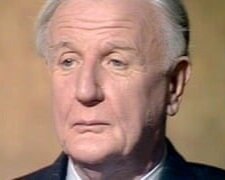
Cecil King
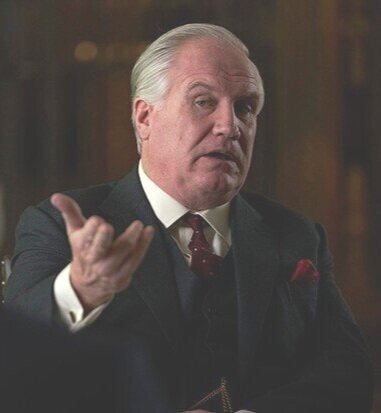
Rupert Vansittartas as Cecil King in The Crown
So. How much of the coup plot in this episode really happened? Here’s what we know. Cecil King was Chairman of the huge International Publishing Corporation, which owned the Daily Mirror, and a director at the Bank of England. According to a memoir by Hugh Cudlipp, a newspaper editor and publisher [who worked with king?], King was convinced that Britain was headed for ruin and Wilson and the rest of the Labour government in charge needed to be kicked out before they pushed the country over the edge.
King and his allies did try to get Lord Mountbatten on board with their plans, and even approached him at the Burma Star Association annual reunion (although it wasn’t King who talked to Mountbatten). King, Cudlipp, and Mountbatten did meet in 1968 to discuss King’s plans (Mountbatten brought a friend of his along). At the end, King did actually ask Mountbatten to be a titular head of government in the event of their coup. However, both Mountbatten and his friend left, saying the plan was rank treachery and they could not possibly be involved in it. A few days later, King decided to go ahead even without Mountbatten on board and published a Daily Mirror front page calling for Wilson to be brought down. He was dismissed as chairman of his publishing group three weeks later.
The Queen and Porchie did go on a fact-finding tour of various stables in 1969. However, it was a much shorter trip just to France. Porchie was appointed her racing manager and stayed in that position until his death.
Lord Mountbatten recites a poem at his Burma veterans meeting to great effect. It’s the last verse of a poem by Rudyard Kipling called “Mandalay,” which is all about how a veteran is looking back on his time in Mandalay, in Burma, and wishing he was back there. It was very popular at the time and a version of it was even set to music and sung by Frank Sinatra. It’s less popular these days, as it’s got an outdated imperialist point of view. But it works perfectly for a meeting of people who were in the Burma campaign in World War II. It apparently is sometimes still read at World War II veterans events in the United Kingdom. You can find the full poem here.
Ship me somewheres east of Suez, where the best is like the worst,
Where there aren't no Ten Commandments an' a man can raise a thirst;
For the temple-bells are callin', an' it's there that I would be --
By the old Moulmein Pagoda, looking lazy at the sea;
On the road to Mandalay,
Where the old Flotilla lay,
With our sick beneath the awnings when we went to Mandalay!
On the road to Mandalay,
Where the flyin'-fishes play,
An' the dawn comes up like thunder outer China 'crost the Bay!
Paper and Ribbon Roses for Sale!
Would anyone be interested in buying a Tudor rose pin, Shakespeare rose pin, or sheet music rose pin? I got over excited and made way too many for TudorCon, lol. Let’s say $3 per flower?
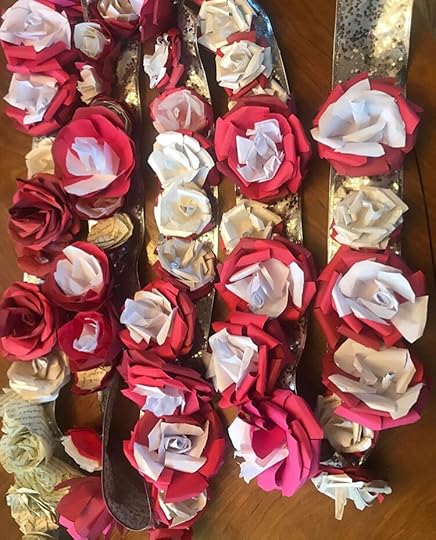
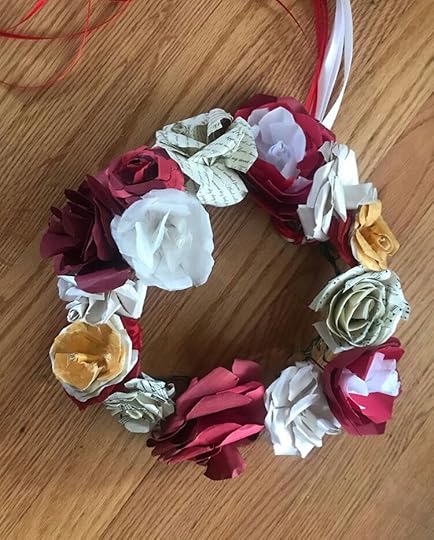
If you’re not near Northern Virginia, I’ll have to figure out shipping costs, so that will be TBD.
I’m also up for making custom flower crowns! Here’s one I made myself out of red and white roses.
I’ve also previously made my own paper rose bouquets for my wedding and ribbon roses for a friend’s wedding. The closeup photo shows my own wedding bouquet, which featured brooches from my grandmother and great grandma (different sides of the family), paper cranes (which are a big symbol in my relationship with John), and sparkly brooches (because sparkles). I would potentially be up for taking commissions for future wedding bouquets, boutonnières, and corsages, just message me if you have questions!
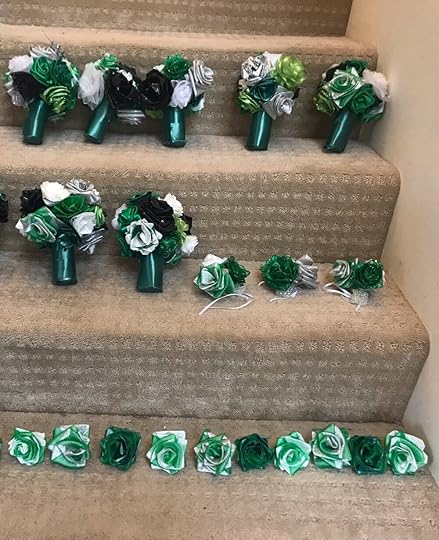
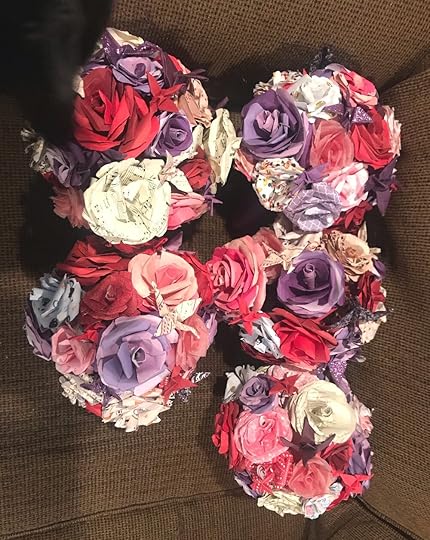
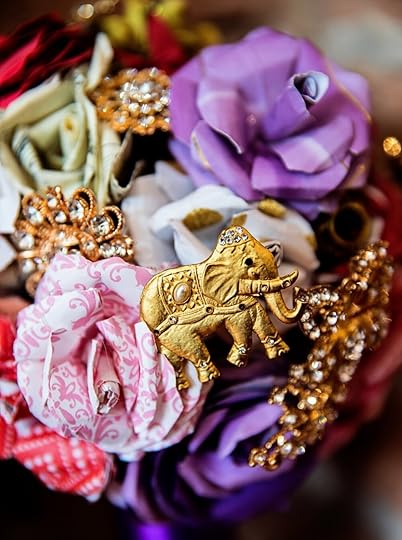
November 22, 2019
The Medals, Sashes, and Tiaras of The Crown
Every time a state banquet or occasion happens in the show, the actors’ costumes are positively covered in medals, sashes, necklaces, and ribbons. But what do they all mean? Let’s find out. :) (I may be missing a few items here, but I’ll keep adding as I figure things out.)
Elizabeth’s Pink and Blue Ribbons with medallions: As you can see in the photos of Claire Foy and Olivia Colman below, for state occasions, the Queen wears two medallions with portraits on them on some raw silk. These are Royal Family Orders, which are awarded to female members of the British royal family by the monarch (since women don’t get the commemorative medals that the men do). These badges include a small portrait of the monarch in a diamond frame placed over a ribbon; each monarch has a different color silk ribbon. Elizabeth’s pink ribbon badge is from George VI (her father) and her pale blue ribbon badge is from George V (her grandfather). Her own royal family badge is yellow. These awards are given out privately and not announced, so they only way you know whether a family member has received one is if you see them wearing them in public. These are only worn at formal events, like state dinners.
Elizabeth’s and Philip’s Blue Sashes: The blue sash worn by both Elizabeth and Philip in the series signifies the Royal Victorian Order, which is given by the Queen for services to the sovereign. These are given out to both men and women. There are five grades and five levels of the order.
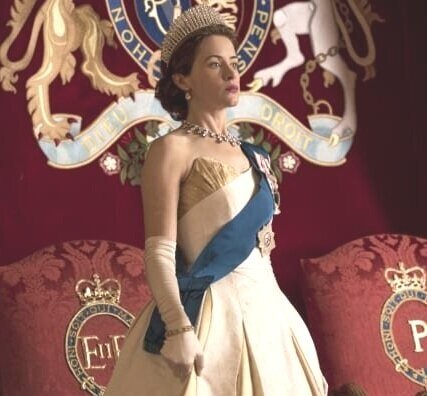
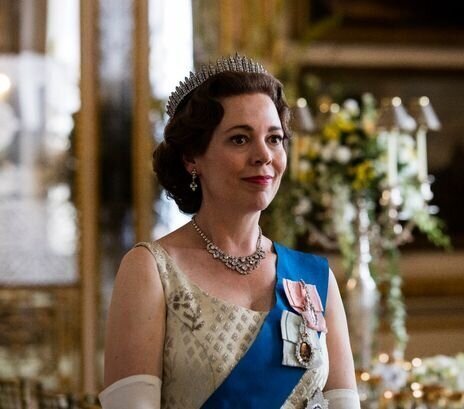
By the way, although it’s not required for the Queen to wear white on state occasions, it appears that she generally does favor white or other light colored dresses, as those colors show off the ribbons and sashes very well.
The Tiaras: The Queen has many tiaras, but it appears that the ones shown here in the series are intended to evoke Queen Alexandra’s Kokoshnik Tiara, dating back to 1888, (left, Claire Foy), and Queen Mary’s Fringe Tiara (Olivia Colman, right). Elizabeth also wore the Fringe Tiara on her wedding day. All of her tiaras are gorgeous and have fascinating histories; if you want to learn more, Harpers Bazaar Australia has a great round up of the tiaras here.
I haven’t figured out the red and white sash the Queen and Princess Anne are wearing in the photograph below, but I’ll add it in once I do!
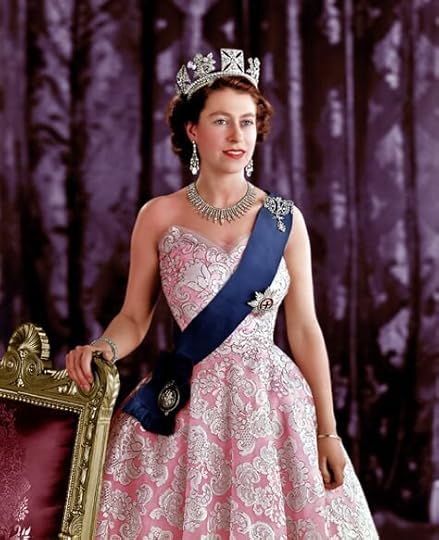
The Queen wears the George IV State Diadem, made in 1820. It’s been worn by four queens so far, Victoria, Alexandra, Mary, and Elizabeth II.
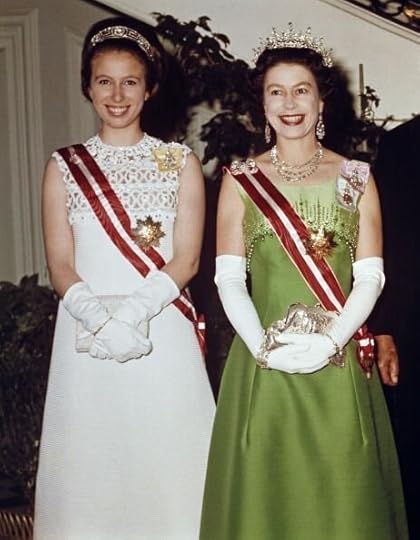
Anne wears the Meander Tiara, which was originally owned by Princess Alice of Greece and Denmark. The Queen wears the Girls of Great Britain and Ireland Tiara (so named for the group that commissioned its making).
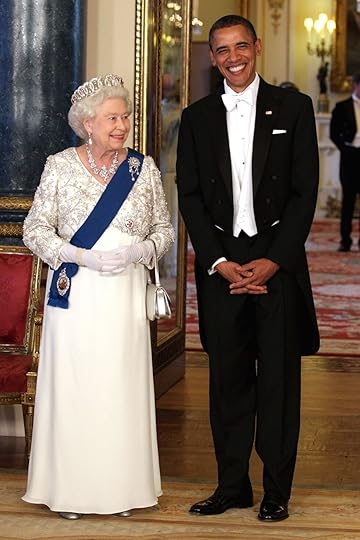
The Queen wears the Grand Duchess Vladimir Tiara to meet President Obama.
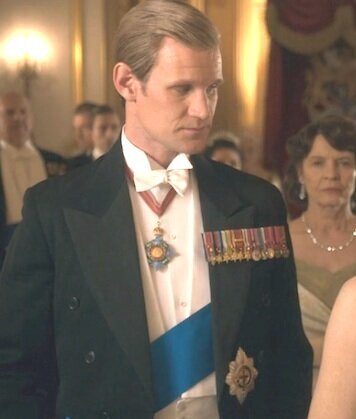
Matt Smith as Prince Philip in The Crown Season 2.
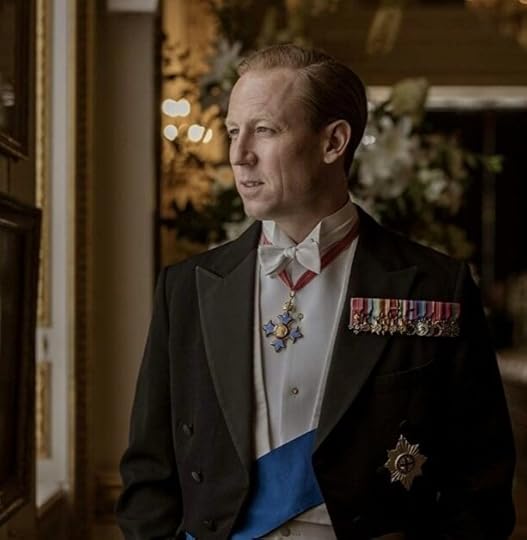
Tobias Menzies as Prince Philip in The Crown Season 3.
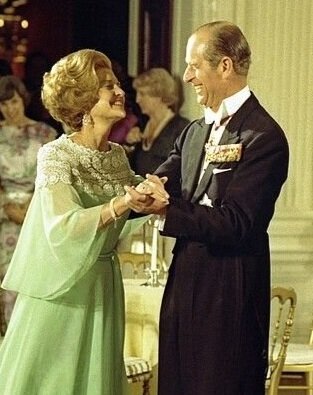
Prince Philip with Betty Ford
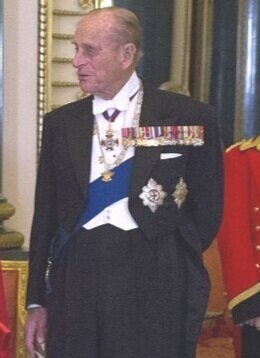
Prince Philip at a state dinner for the President of Mexico
Philip has a TON of medals, mostly earned for his wartime service in World War II. Many many thanks to the Daily Mail for the medal descriptions below, because good lord, it would have taken me a long time to look these all up on my own.
I am really trying to figure out which one of these medals is which, but it may take me a while! Updates when I figure it out. :)
1939-1945 Star: A campaign medal of the British Commonwealth awarded for service during the Second World War.
Atlantic Star: Awarded this in 1945 for service in the Atlantic during the Second World War
Africa Star: Awarded in 1945 for service in Africa during the Second World War
Burma Star (with Pacific Rosette): Awarded for service in the Burma Campaign in the Second World War
Italy Star: Awarded for service in Italy and surrounding areas in the Second World War
War Medal 1939-1945, with Mention in Dispatches: Awarded to those who served in the Armed Forces or Merchant Navy for at least 28 days between 1939-45. The oak leaf on the ribbon denotes the Mention in Despatches
King George VI Coronation Medal, 1937: These medals were made to commemorate the coronation of King George VI and Queen Elizabeth
Queen Elizabeth II Coronation Medal, 1953: A commemorative medal made to celebrate the coronation of Queen Elizabeth II
Greek War Cross, 1950: This is awarded for heroism in wartime to both Greeks and foreign allies. The Duke earned his for his bravery in fighting the Italians when they invaded Greece in 1941.
Croix de Guerre (France) with Palm, 1948: A French military decoration to honour people who fought with the Allies against Axis nations in the Second World War.
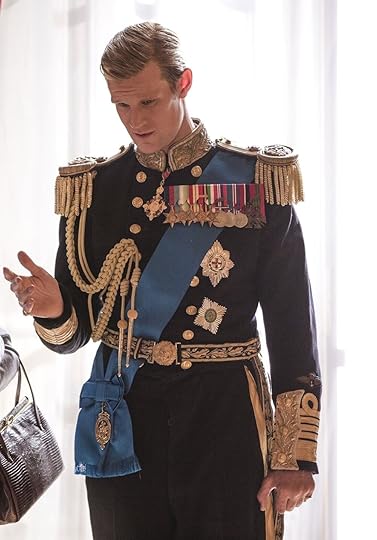
Matt Smith as Prince Philip
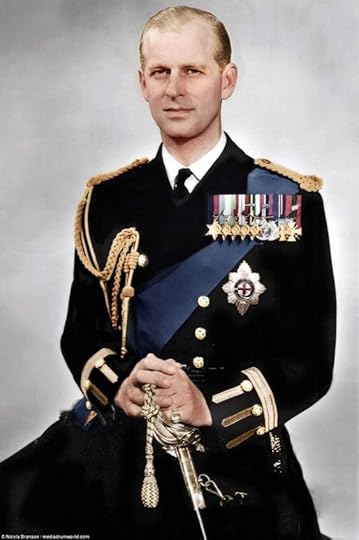
Prince Philip - Getty
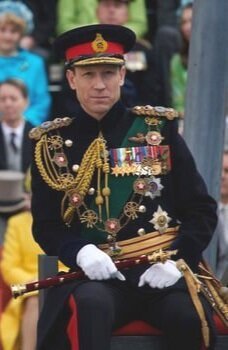
Tobias Menzies as Prince Philip
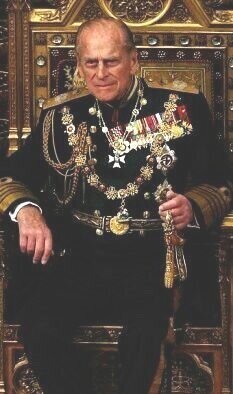
Prince Philip - Getty
Philip’s Military Uniform (more info to come!)



